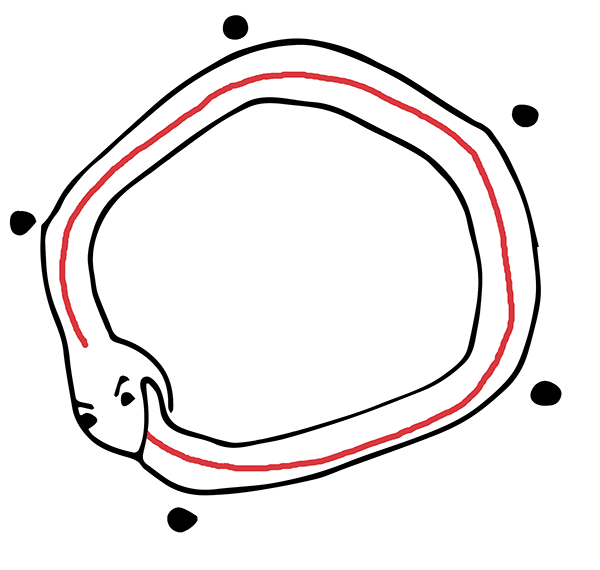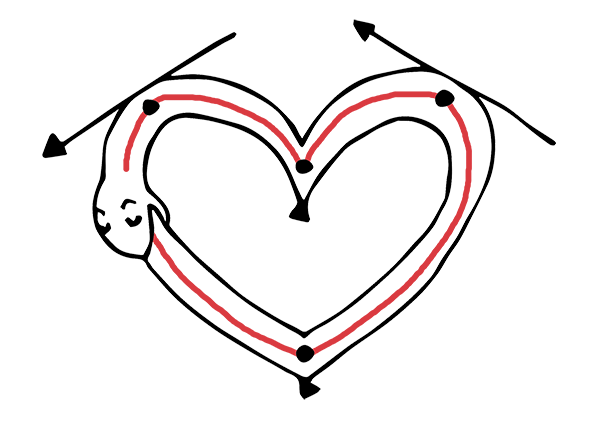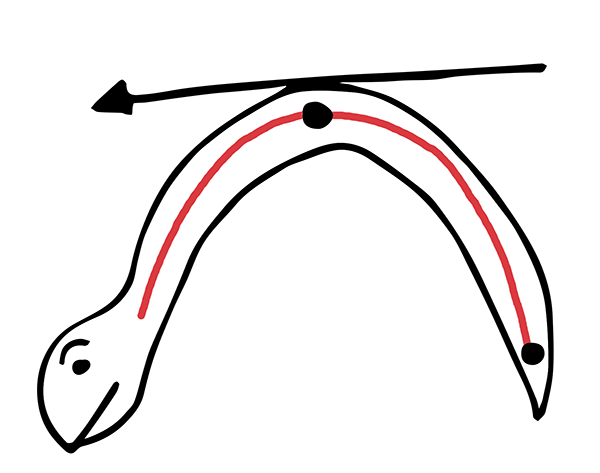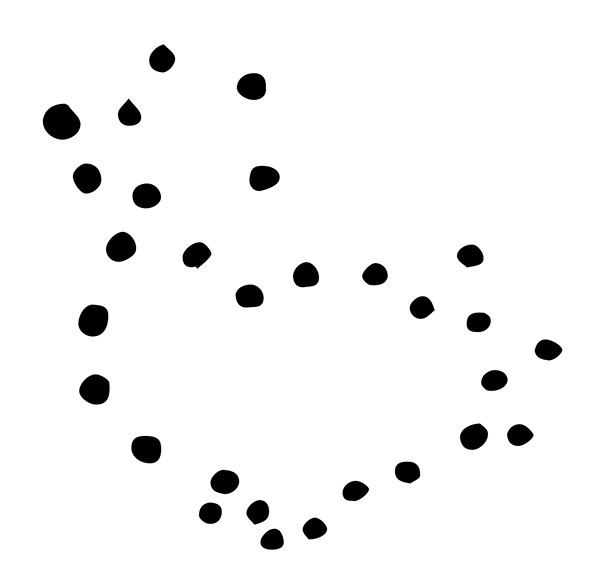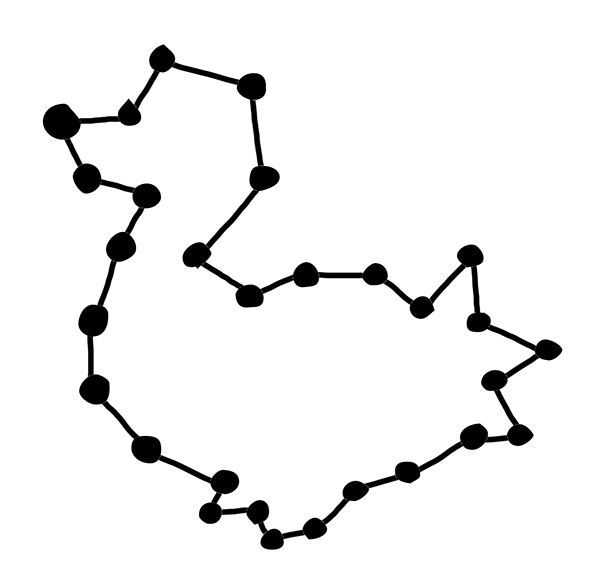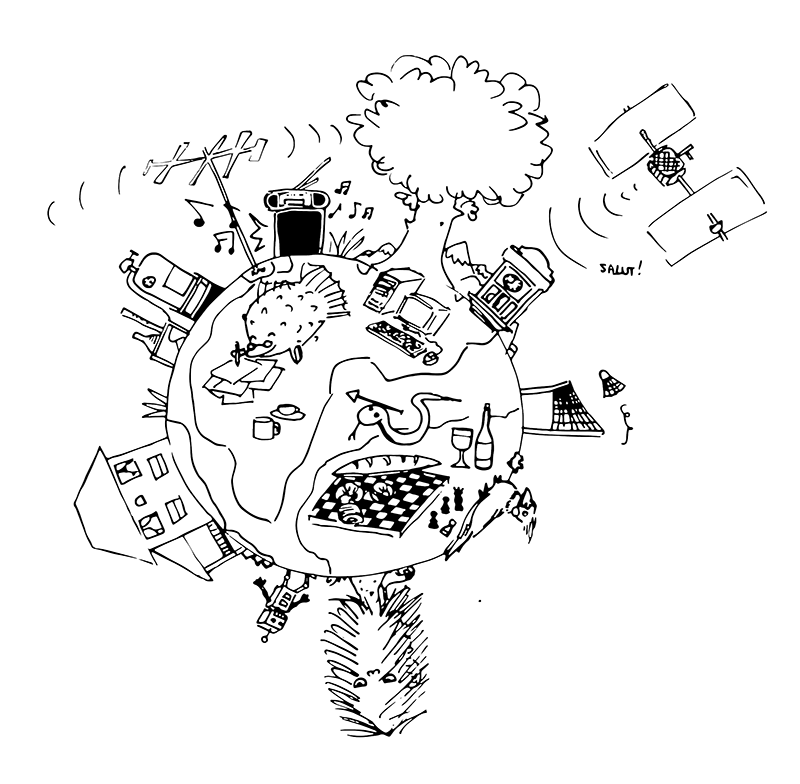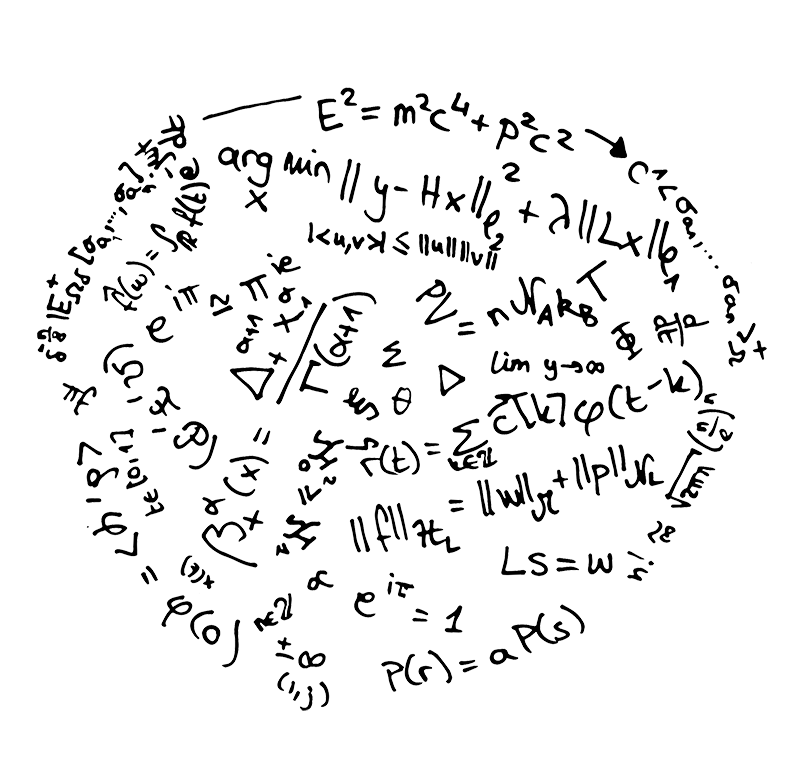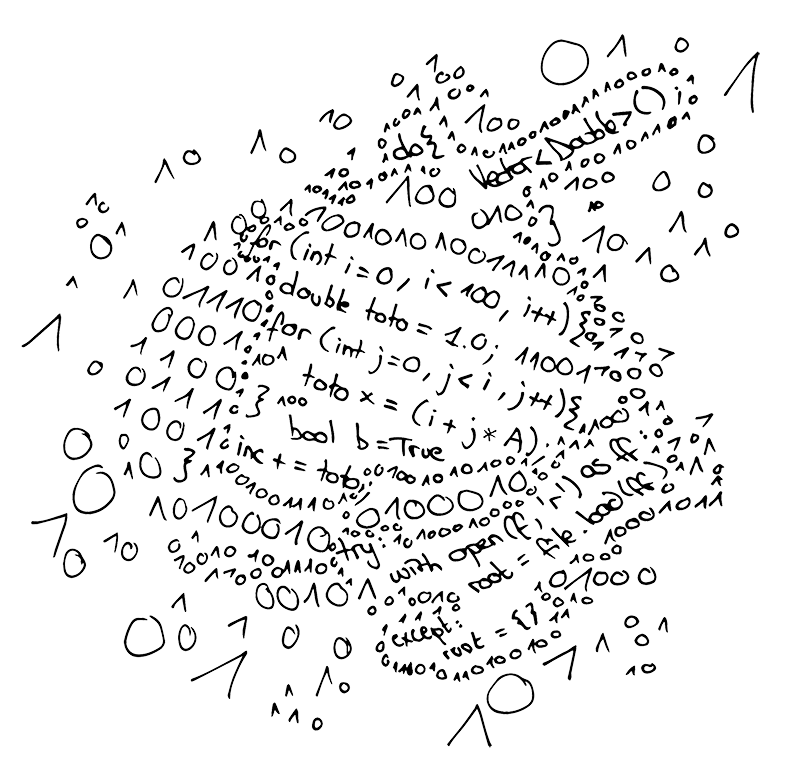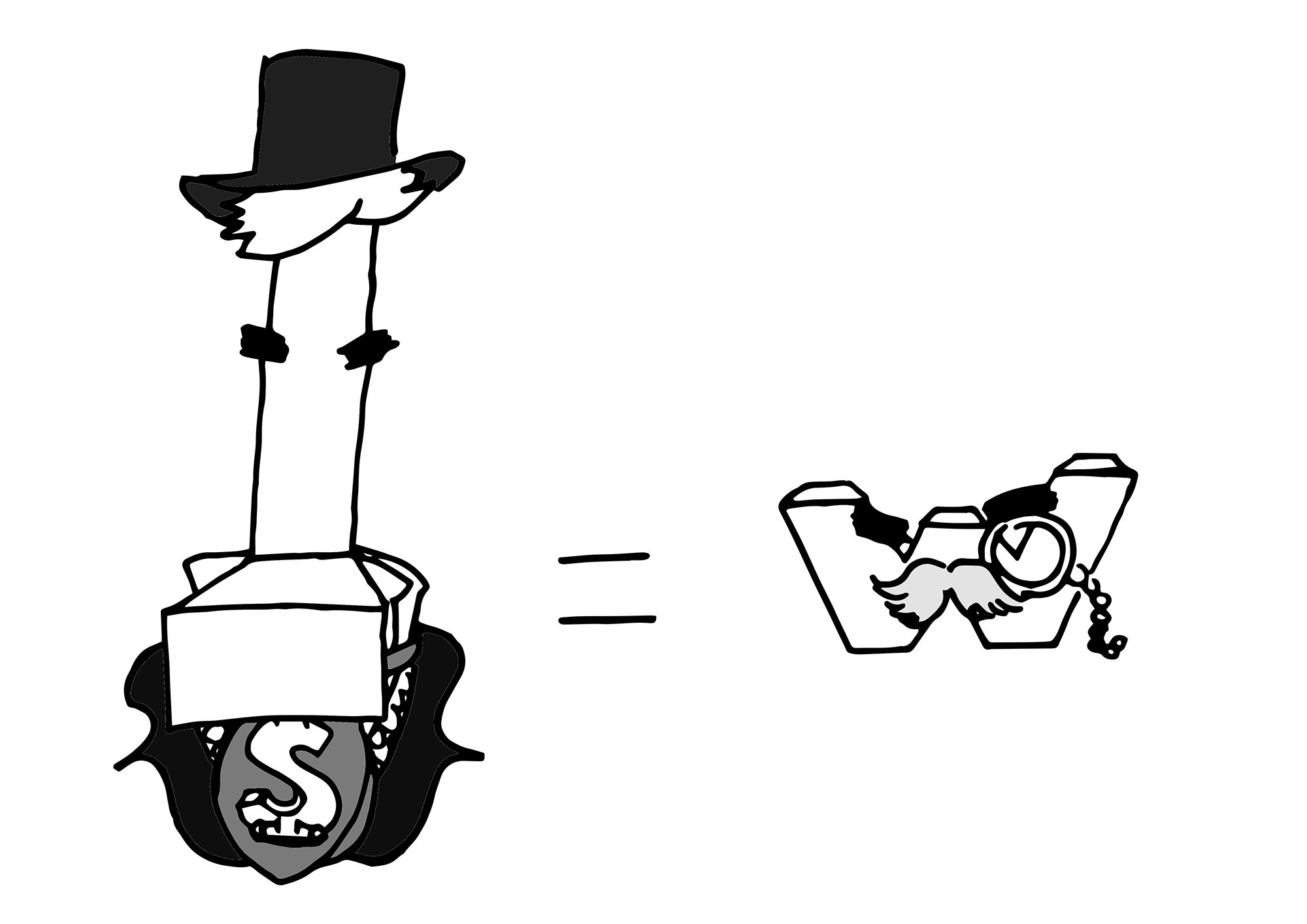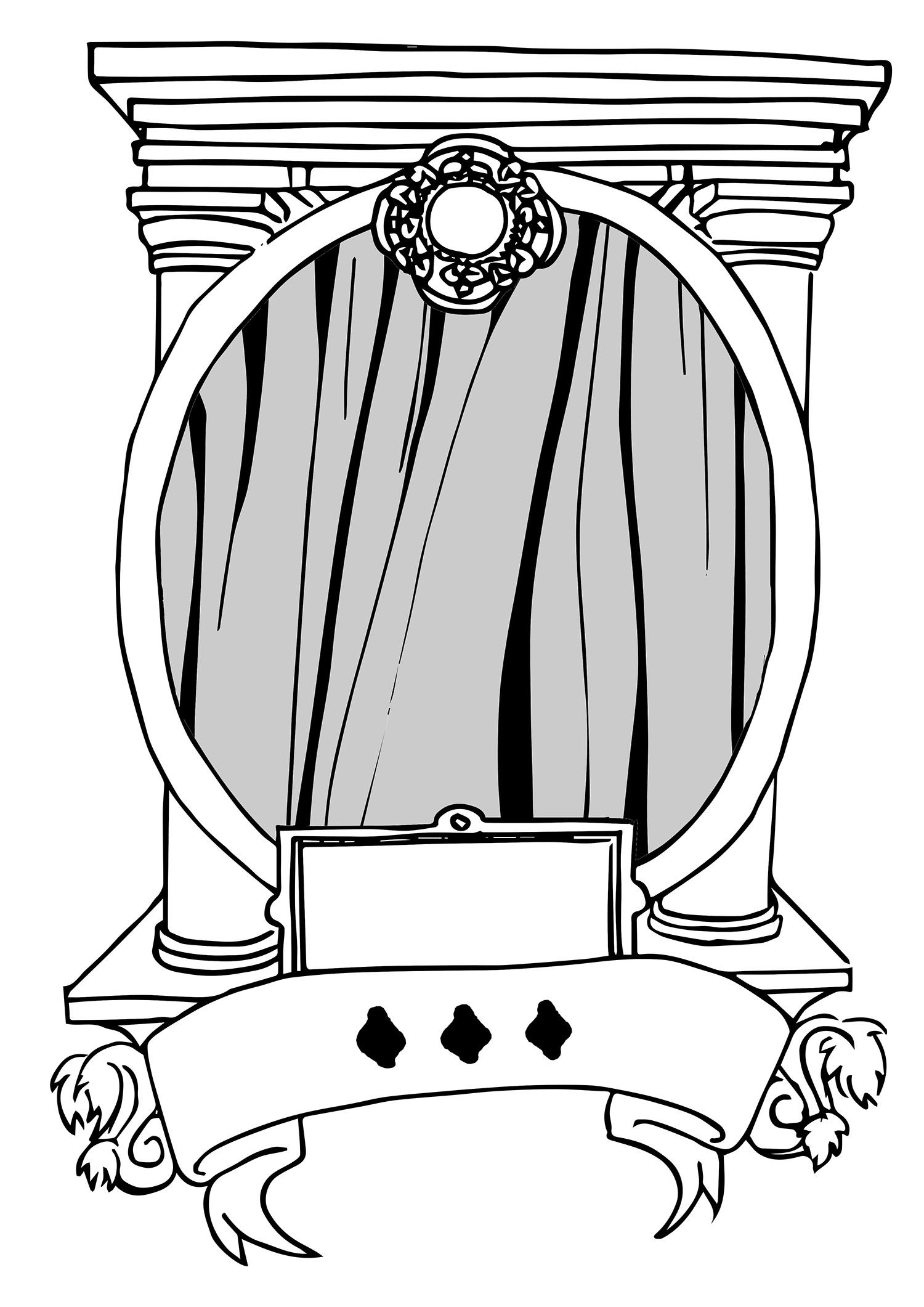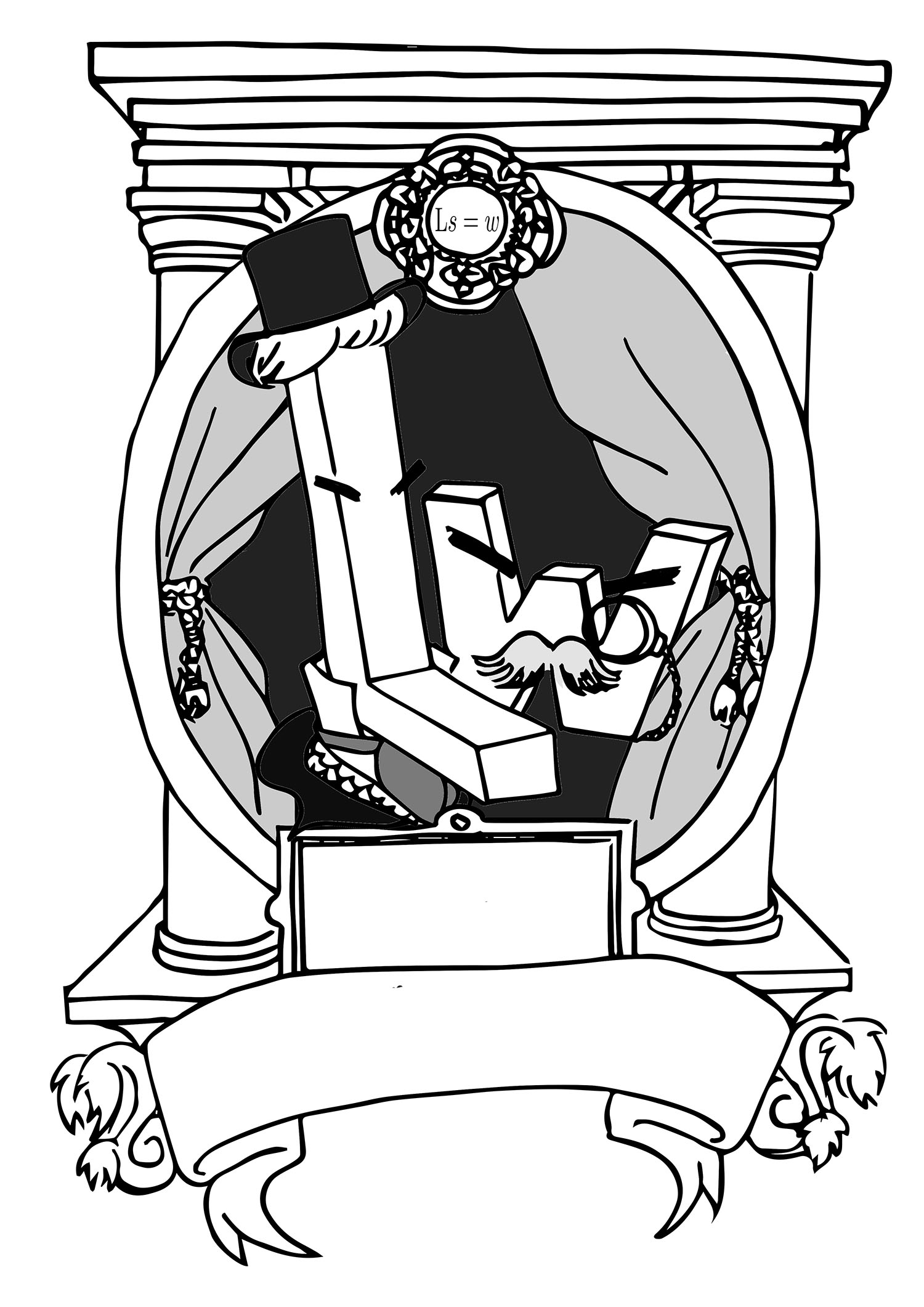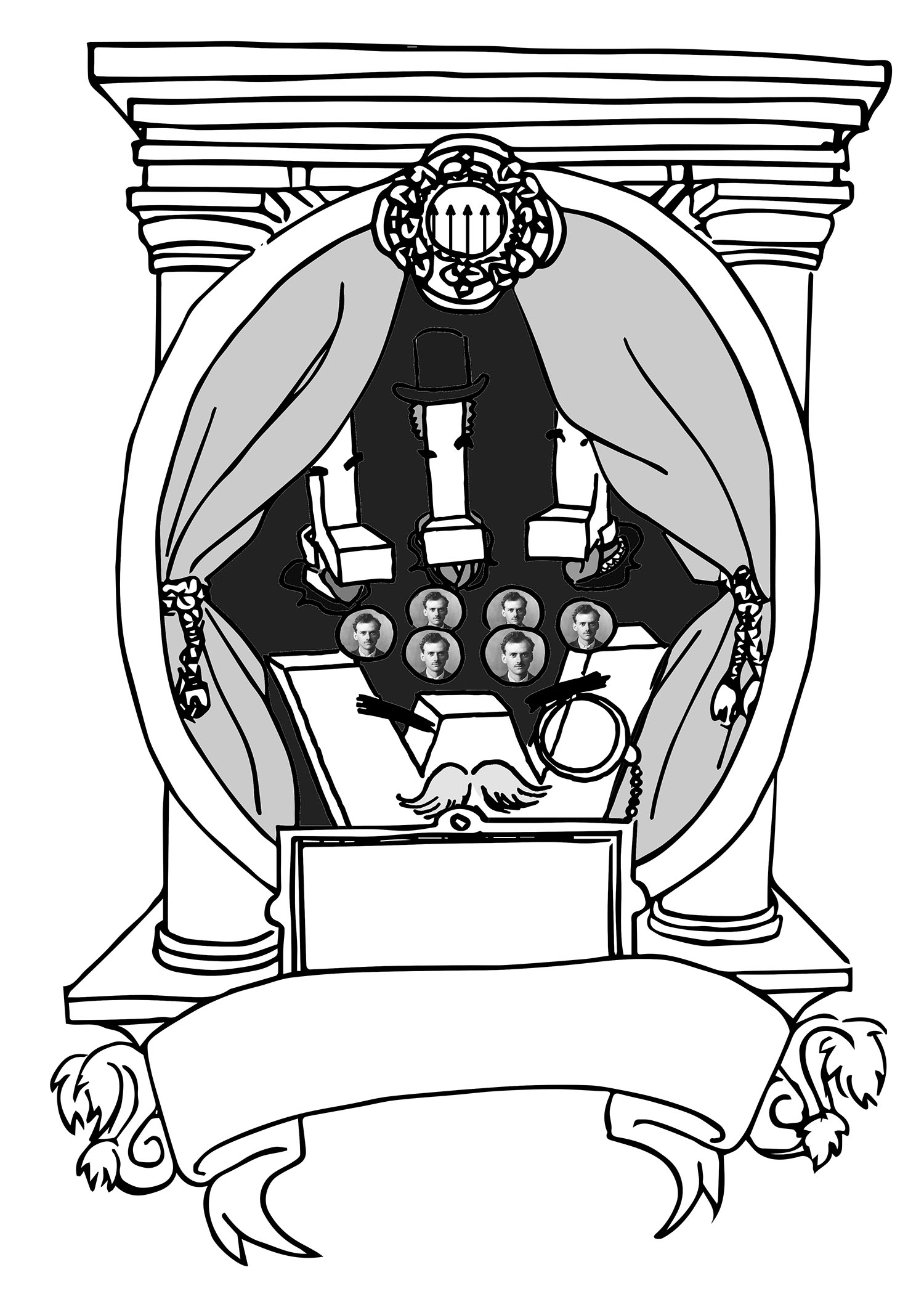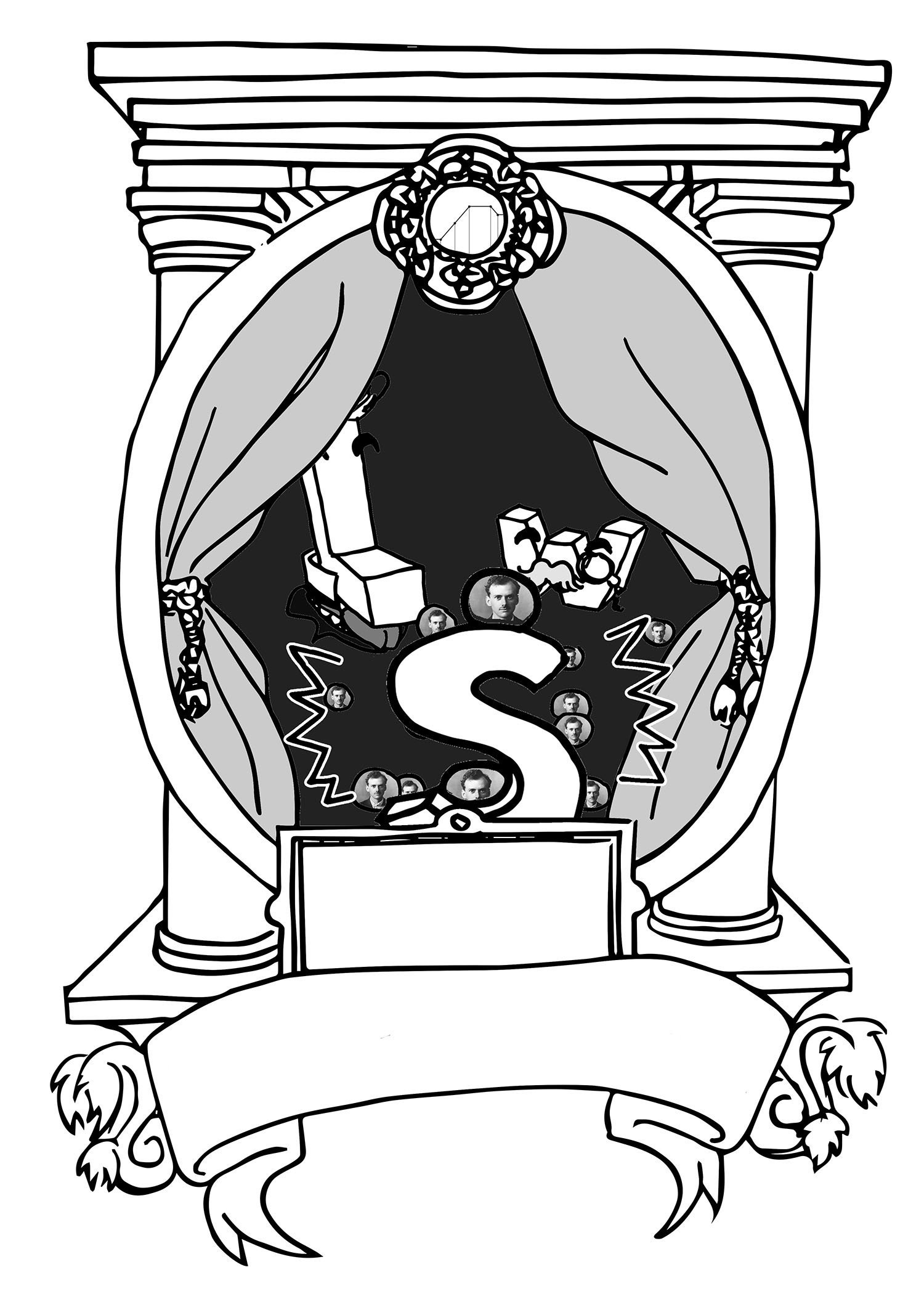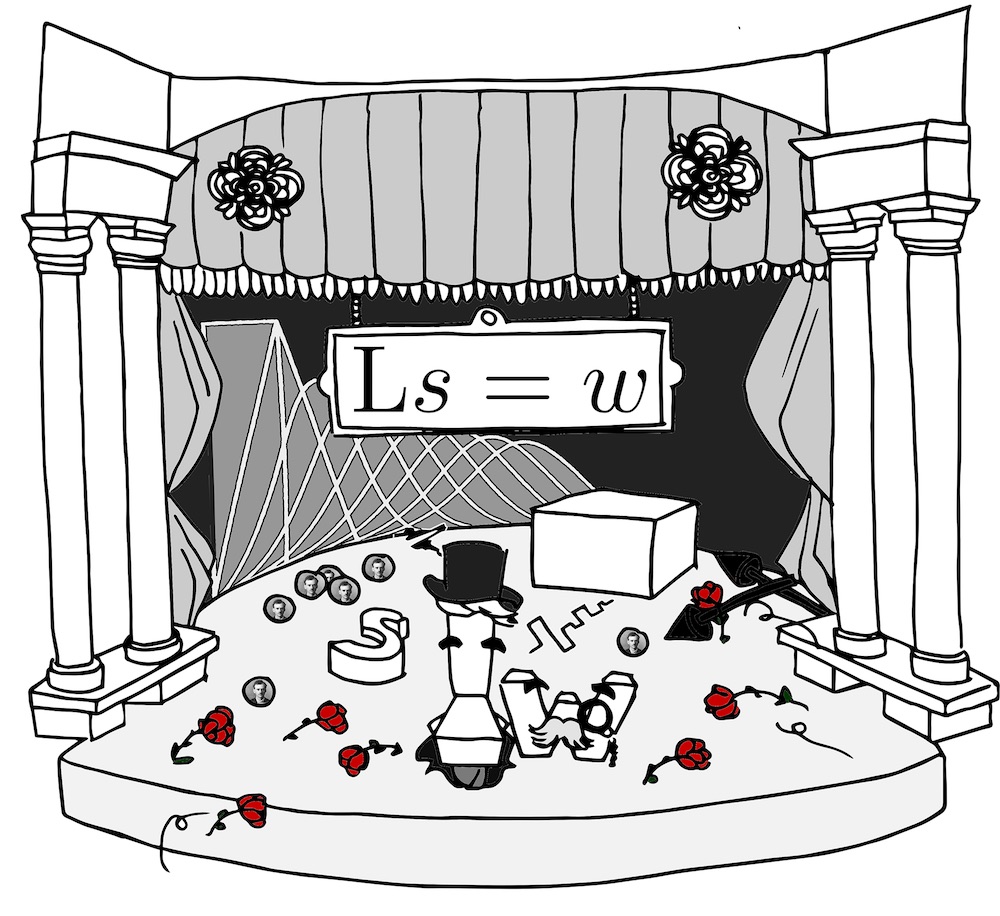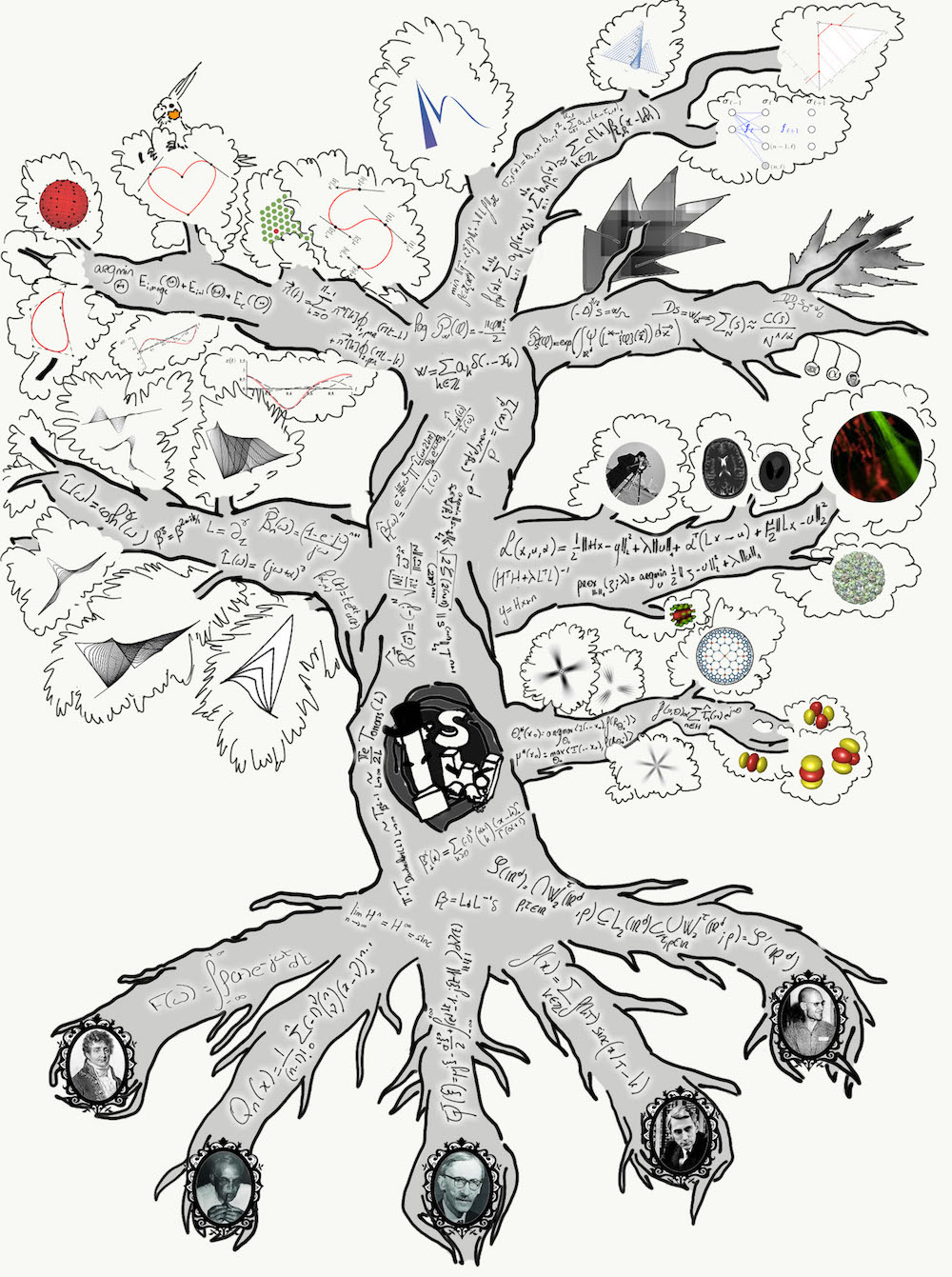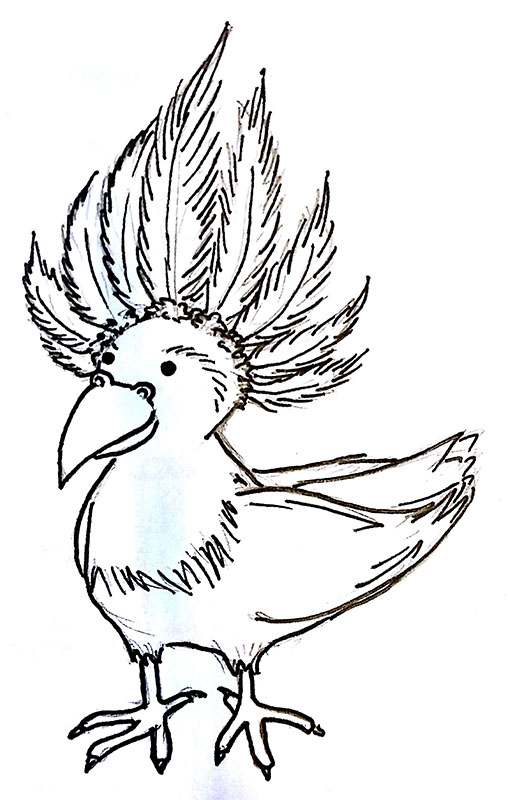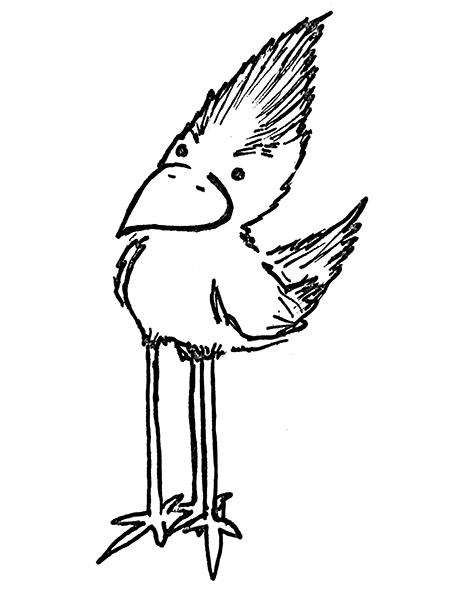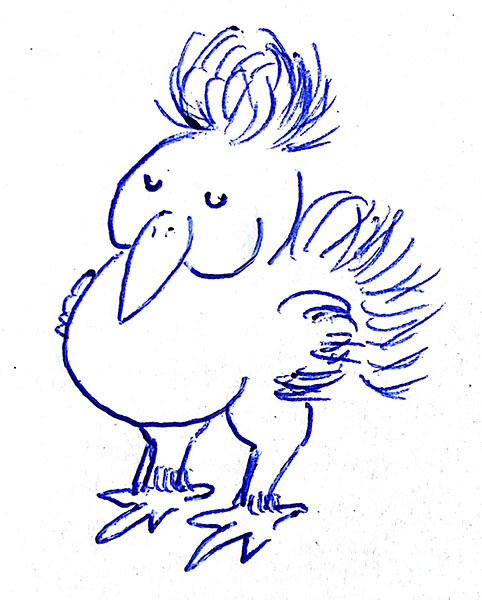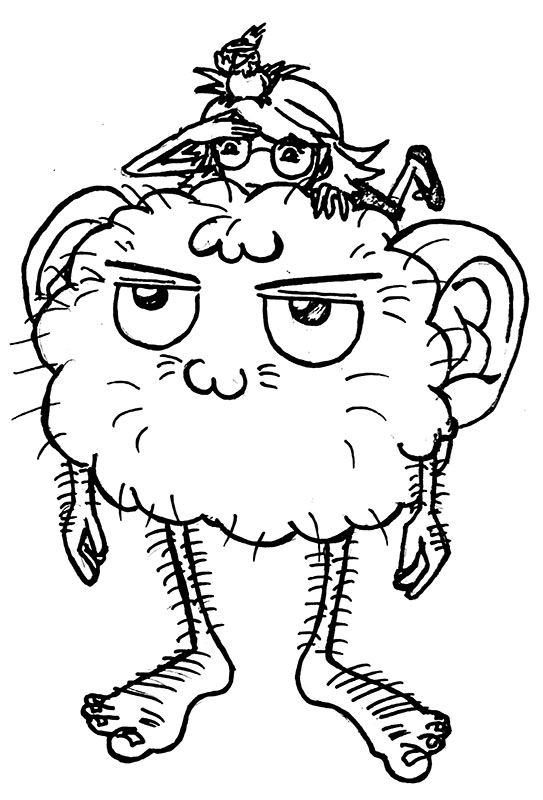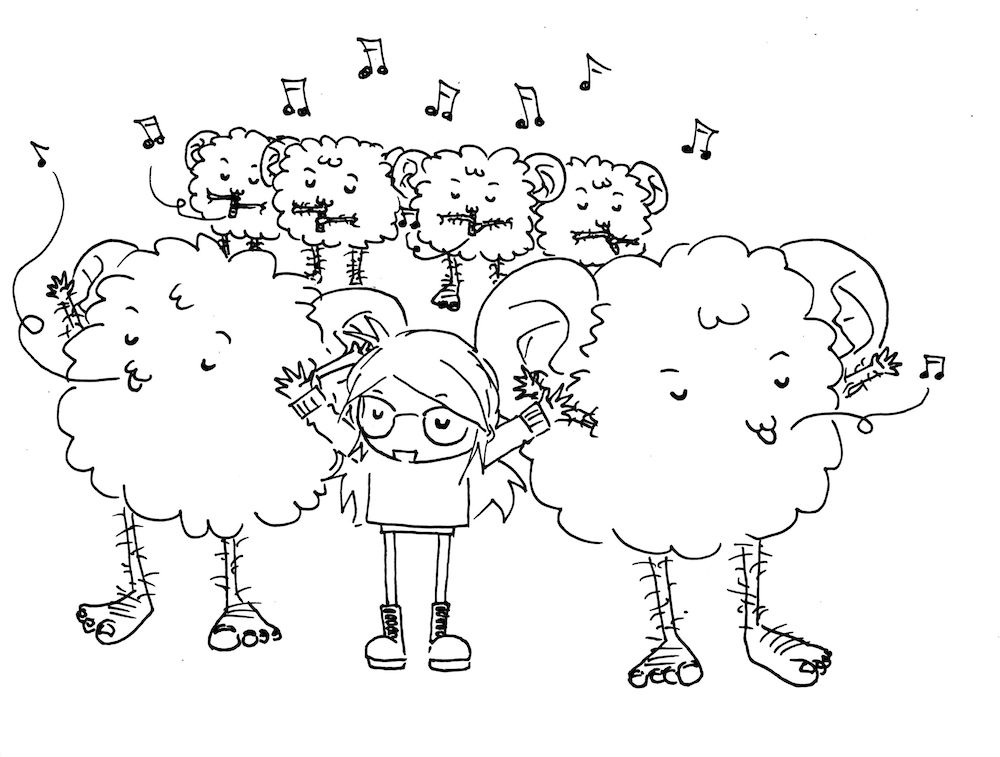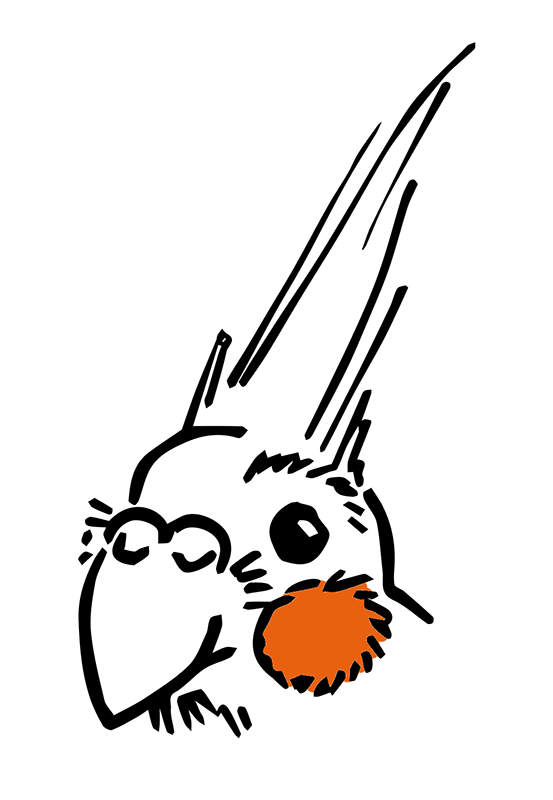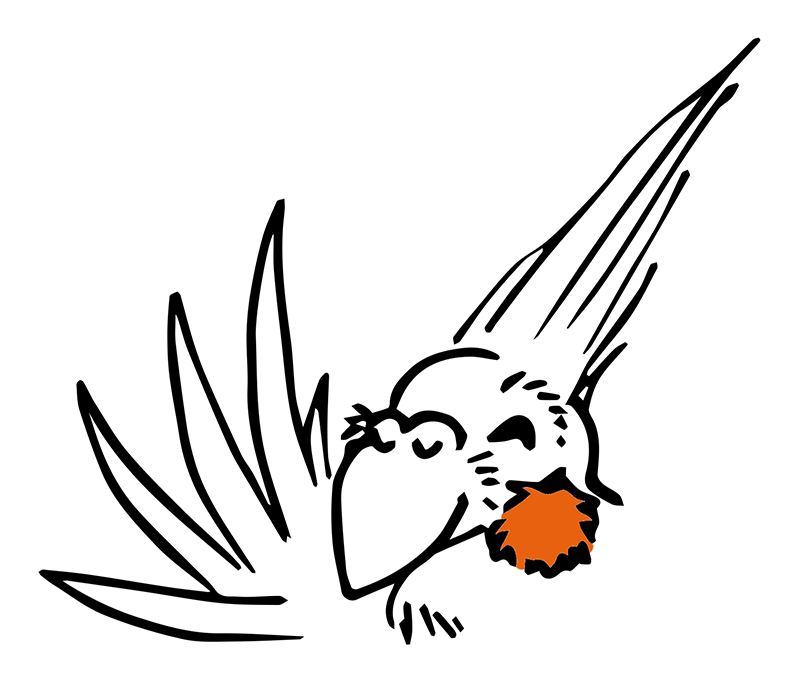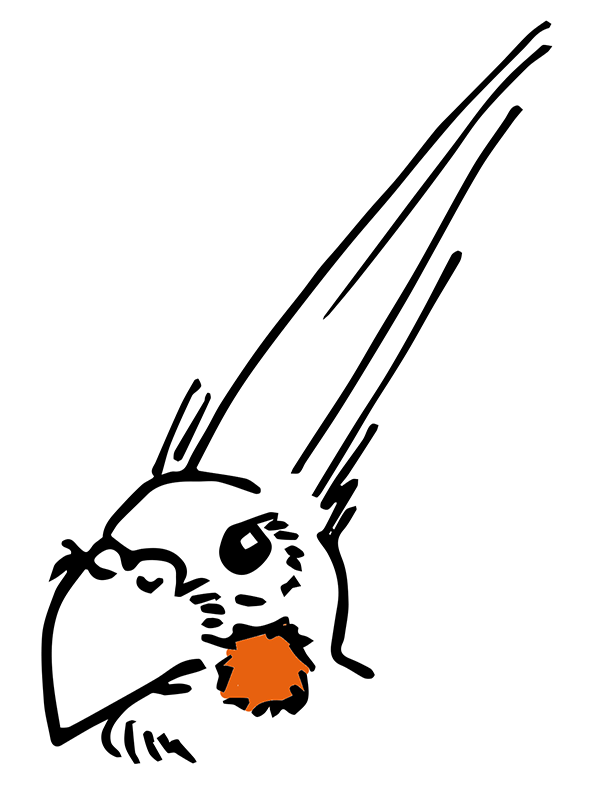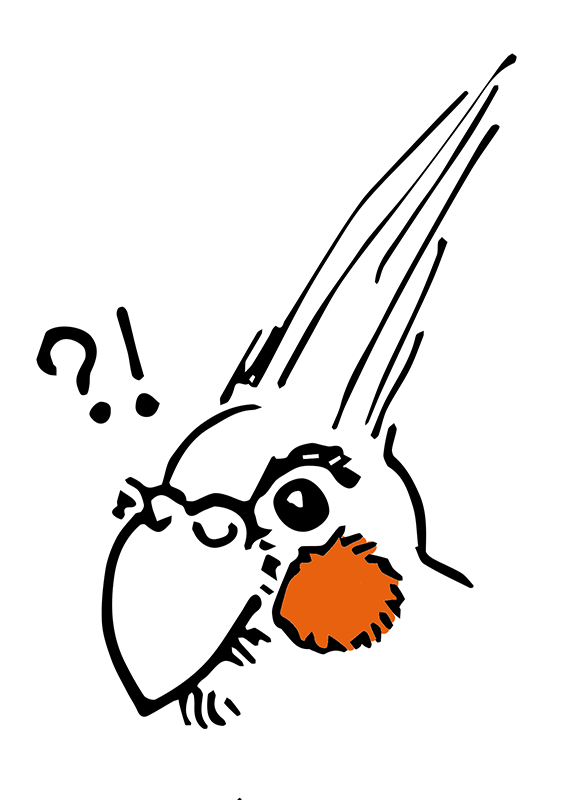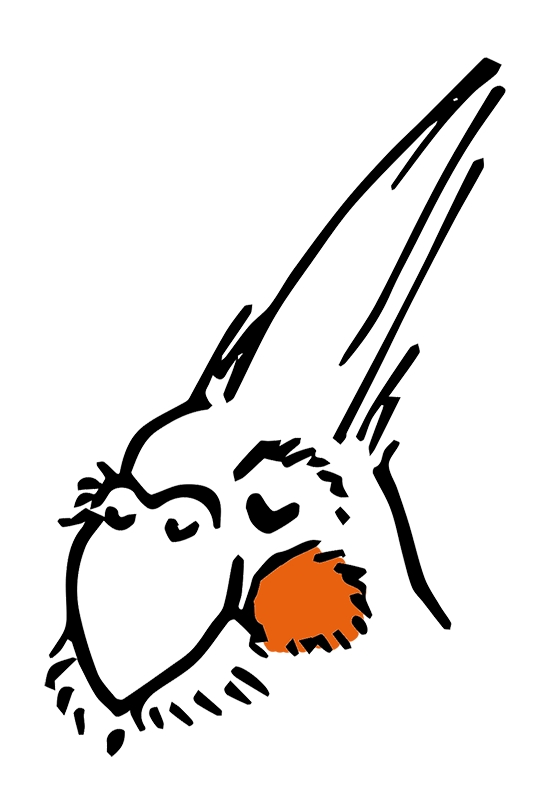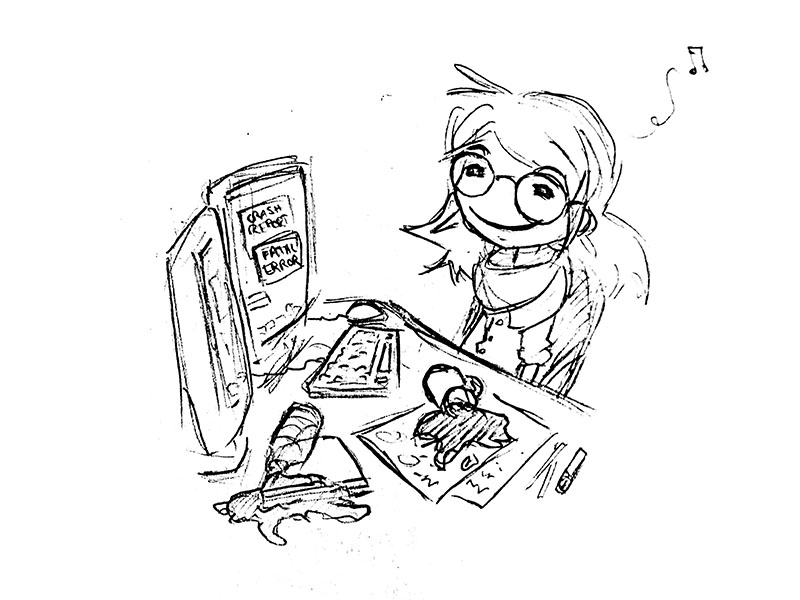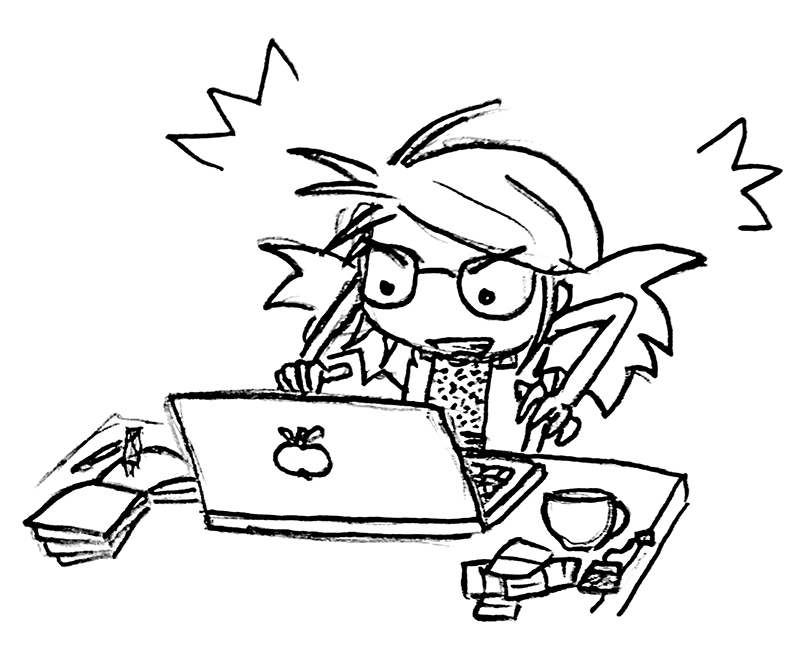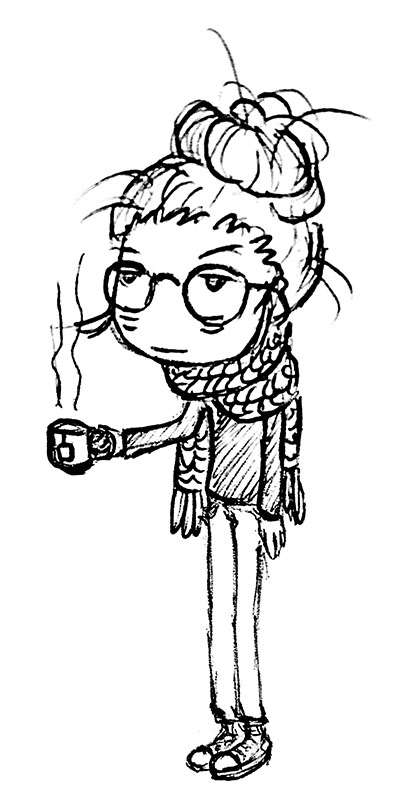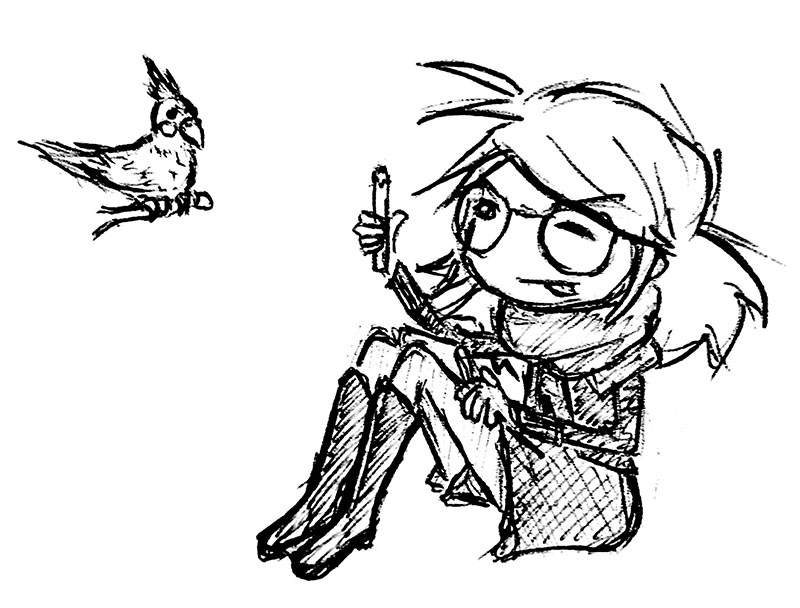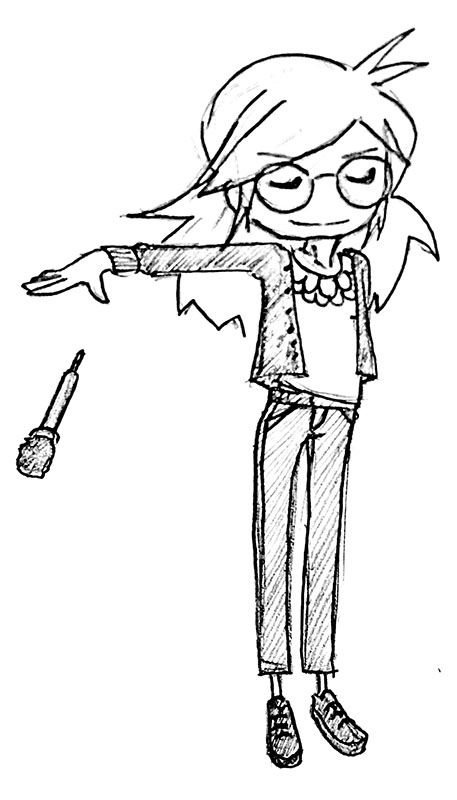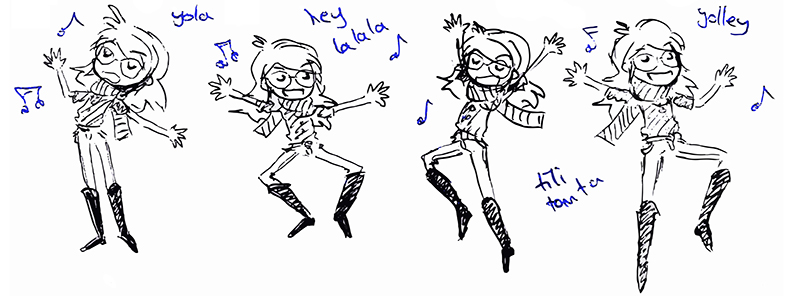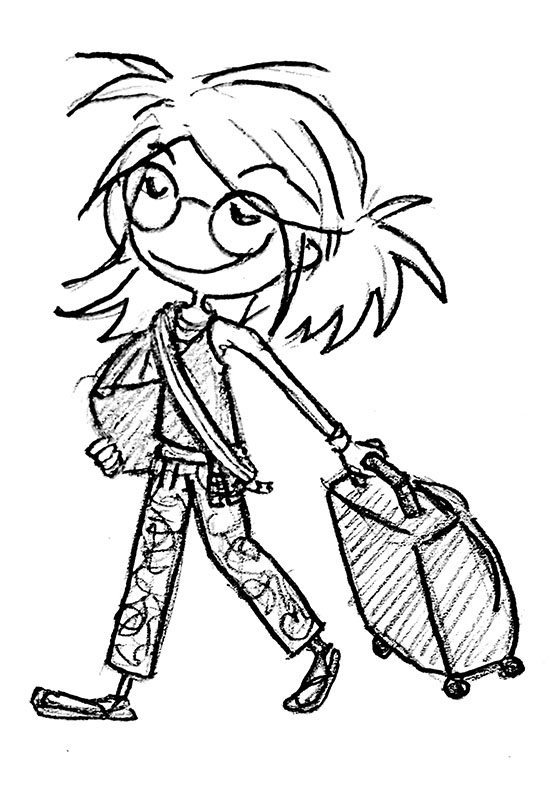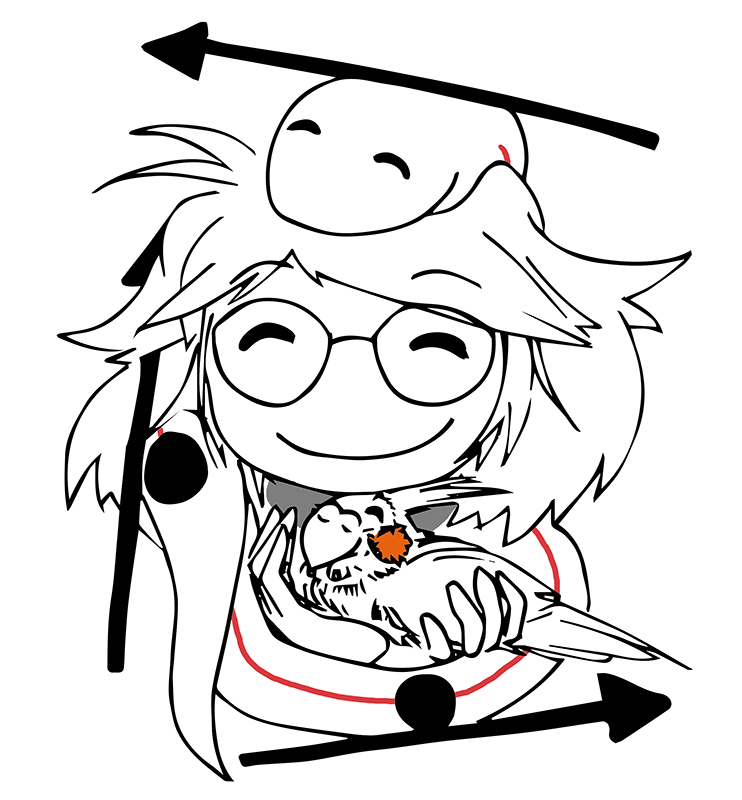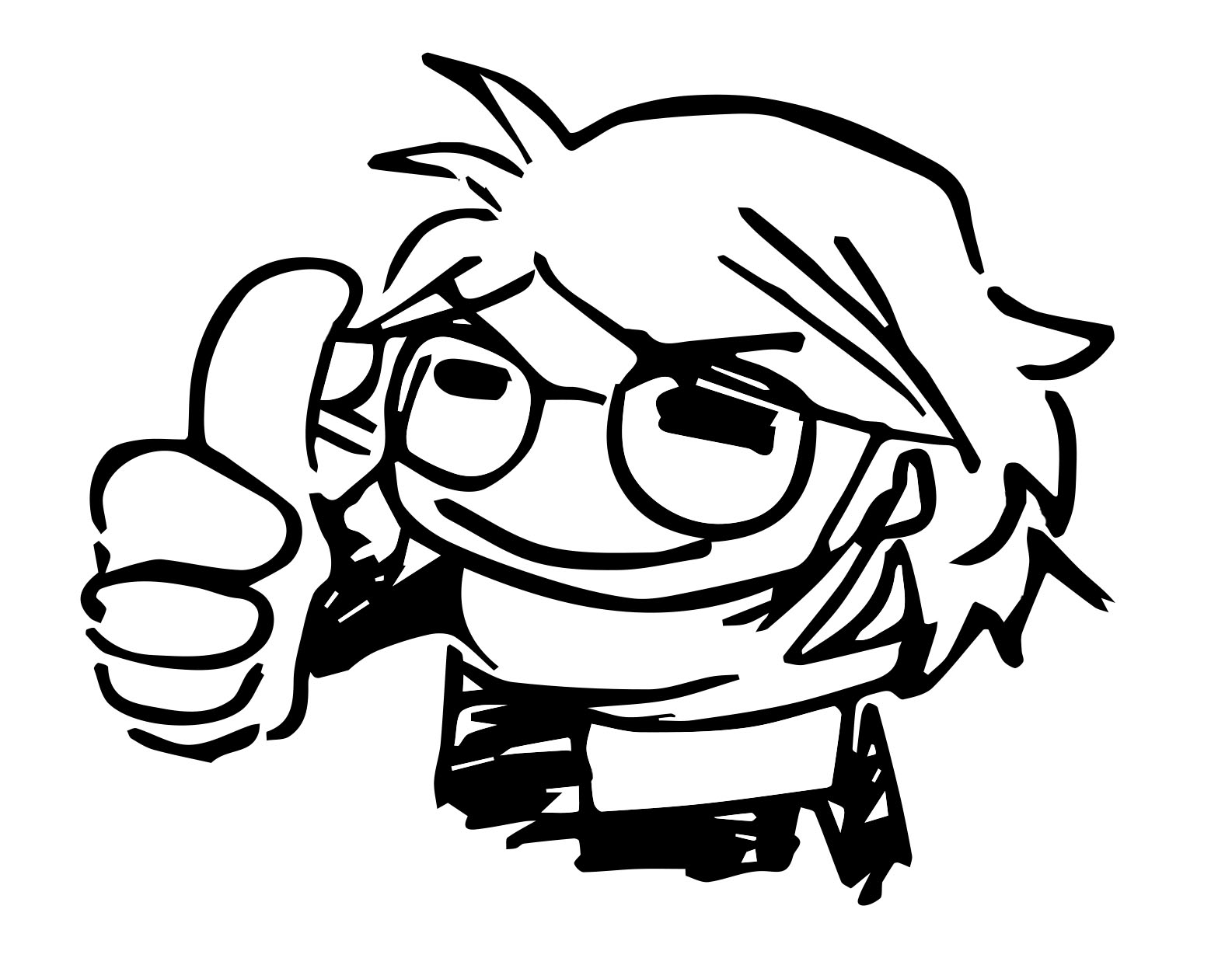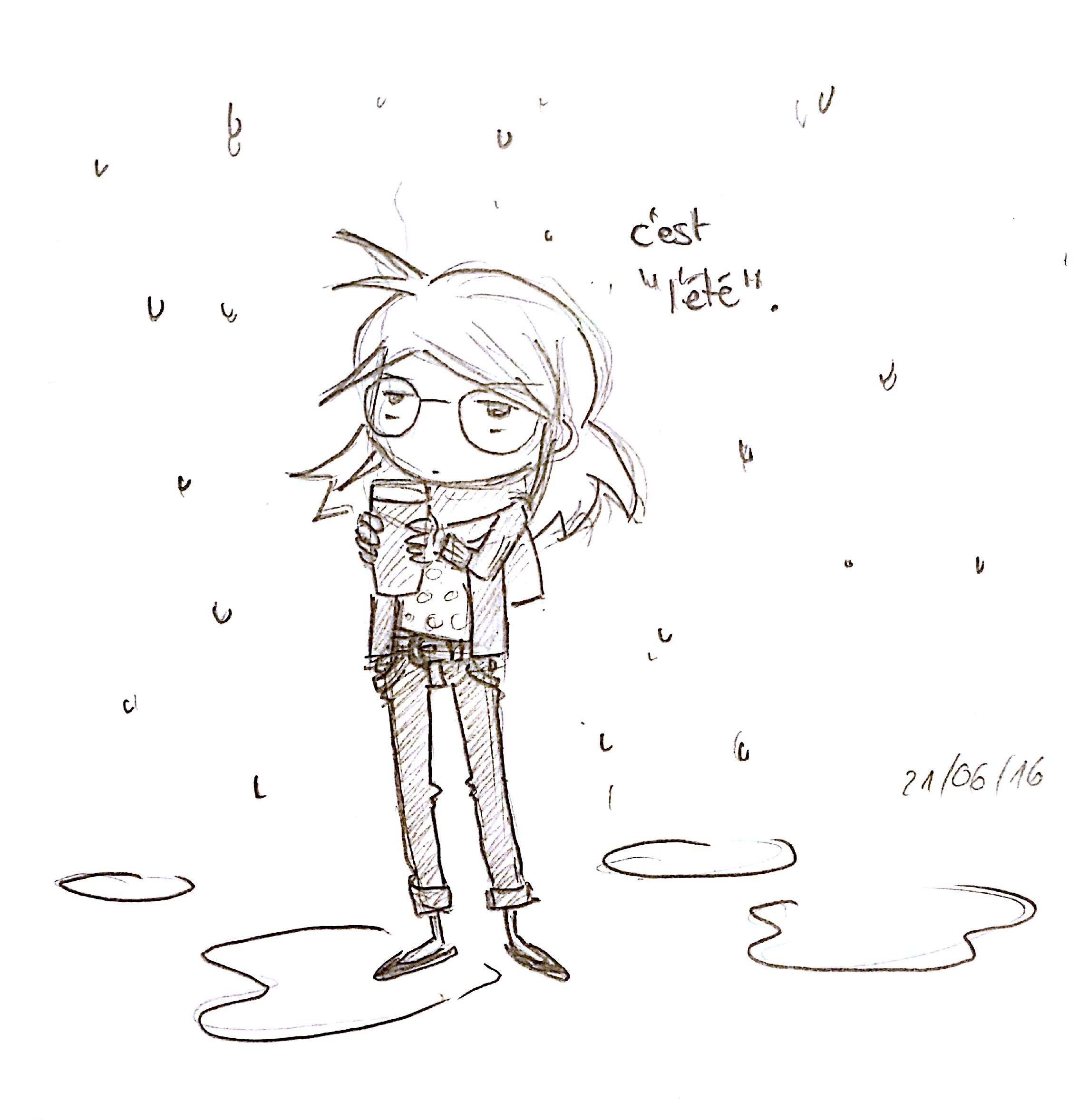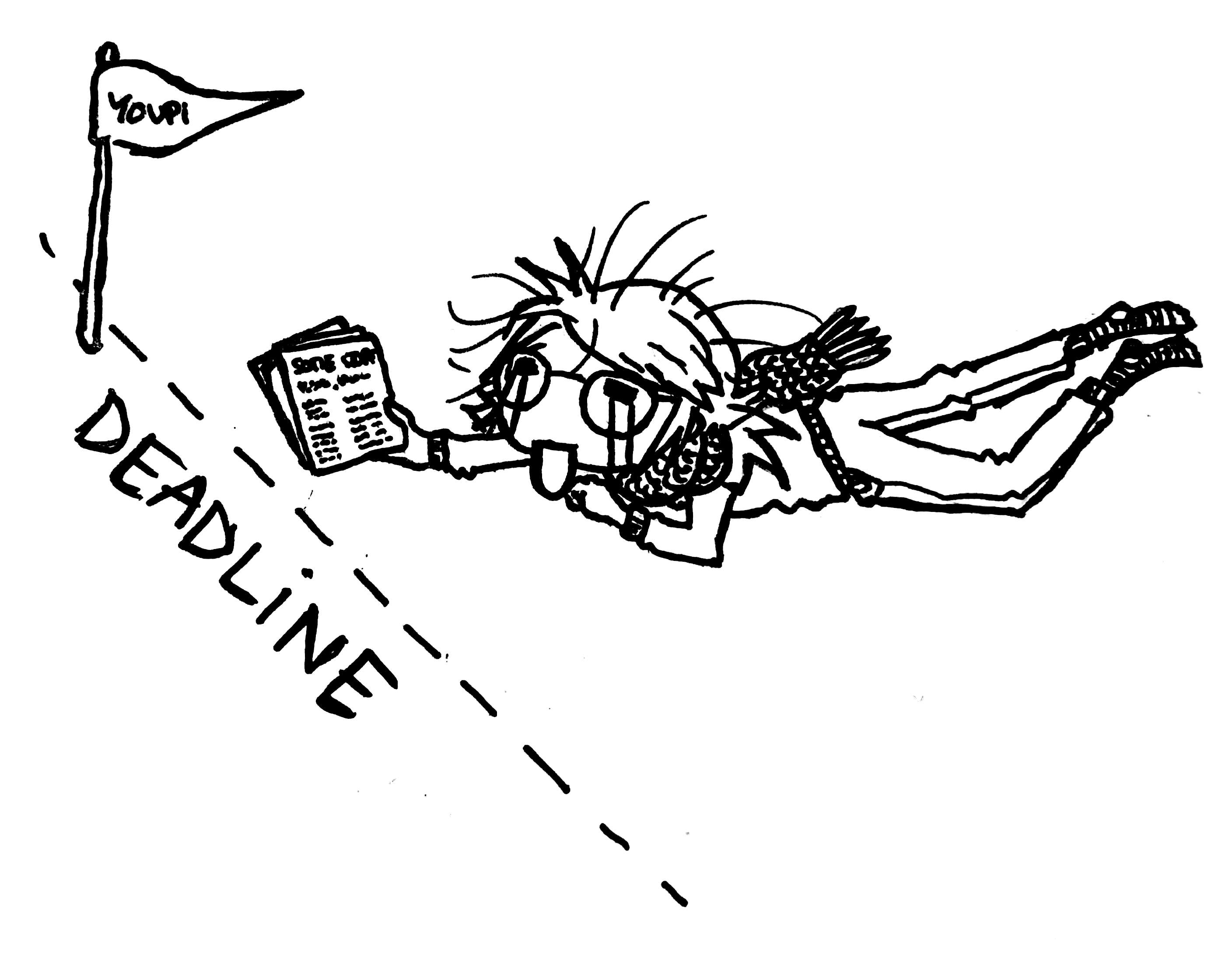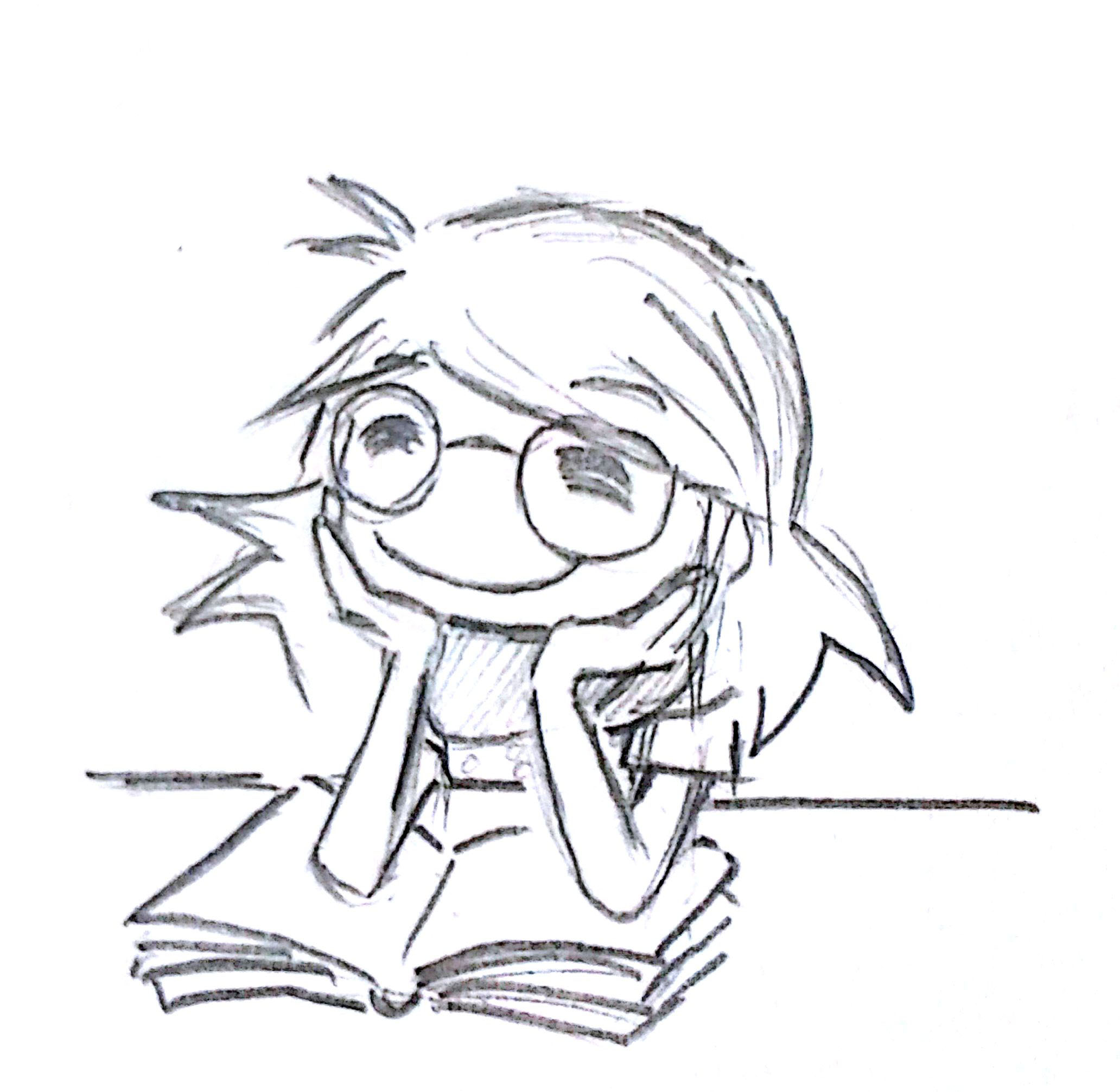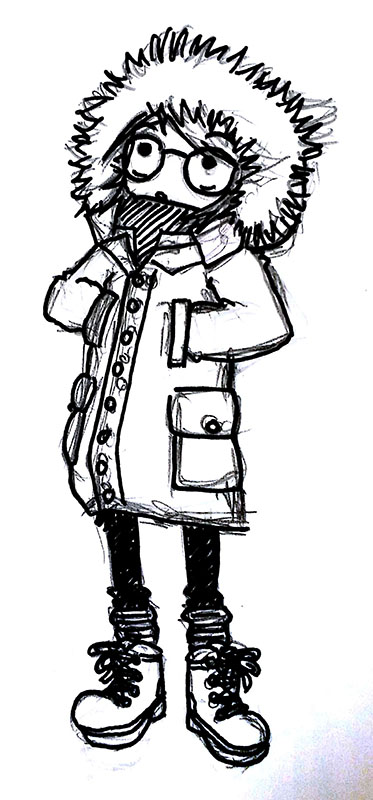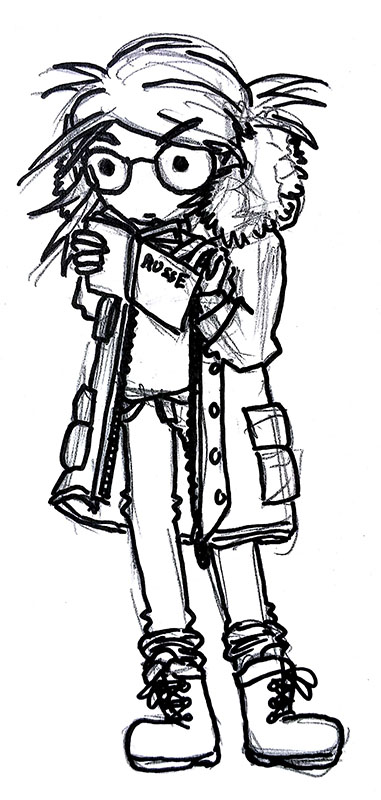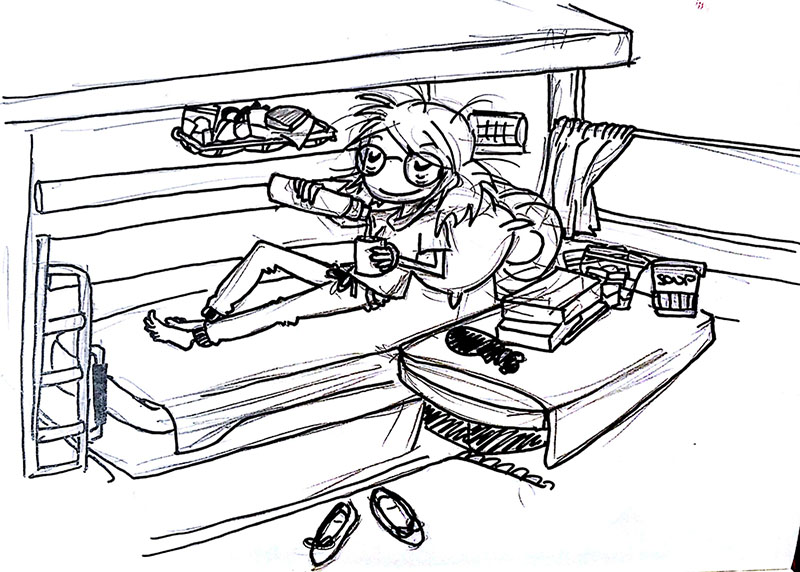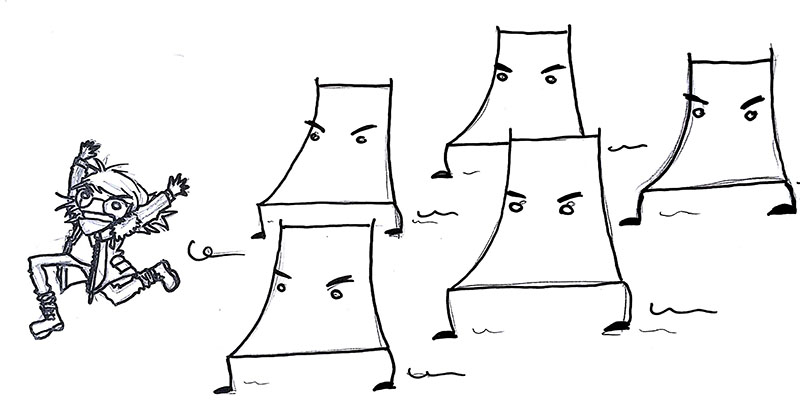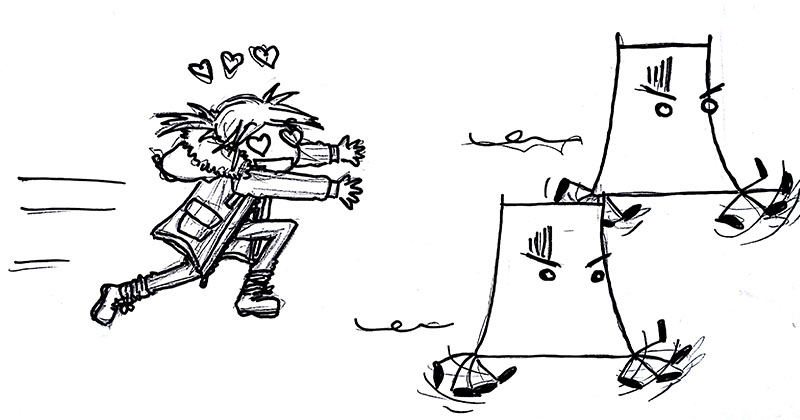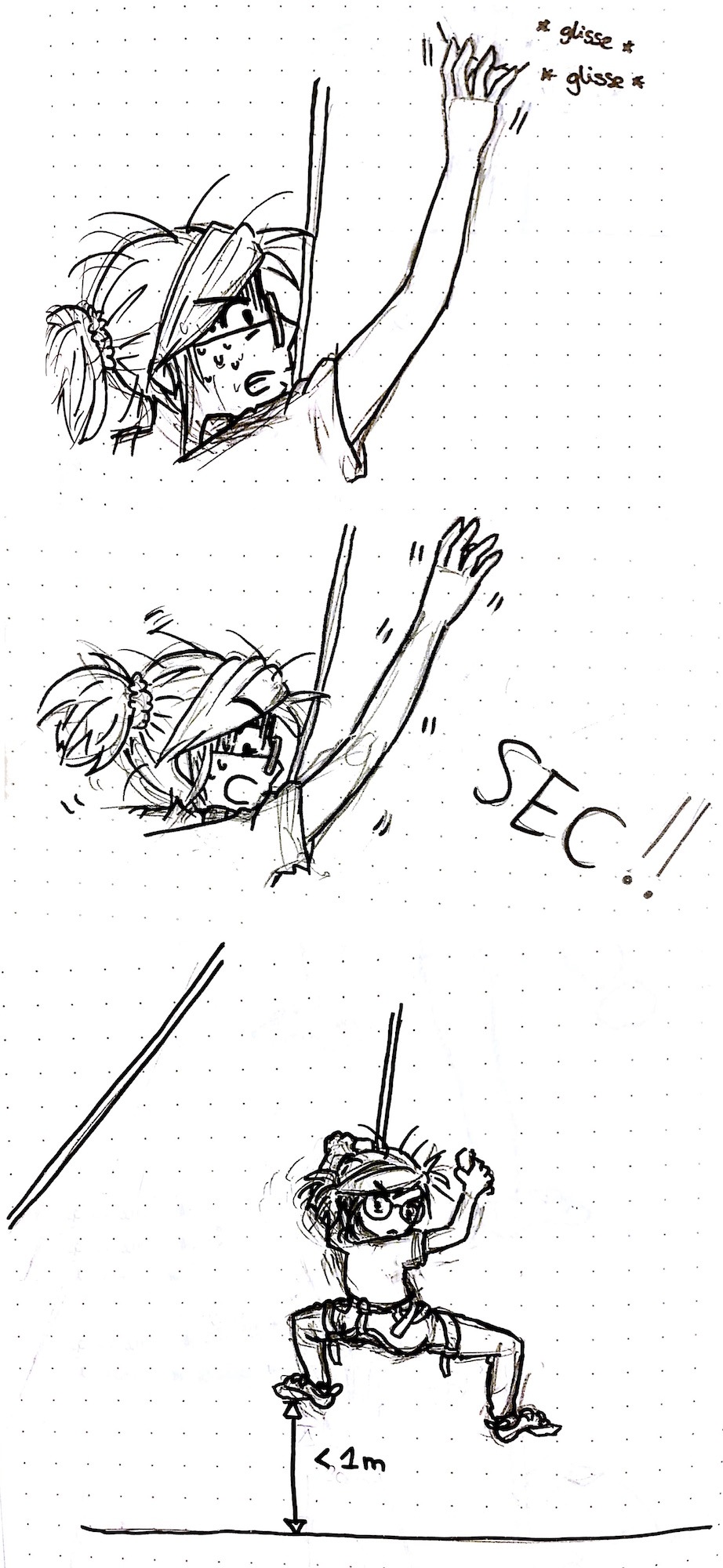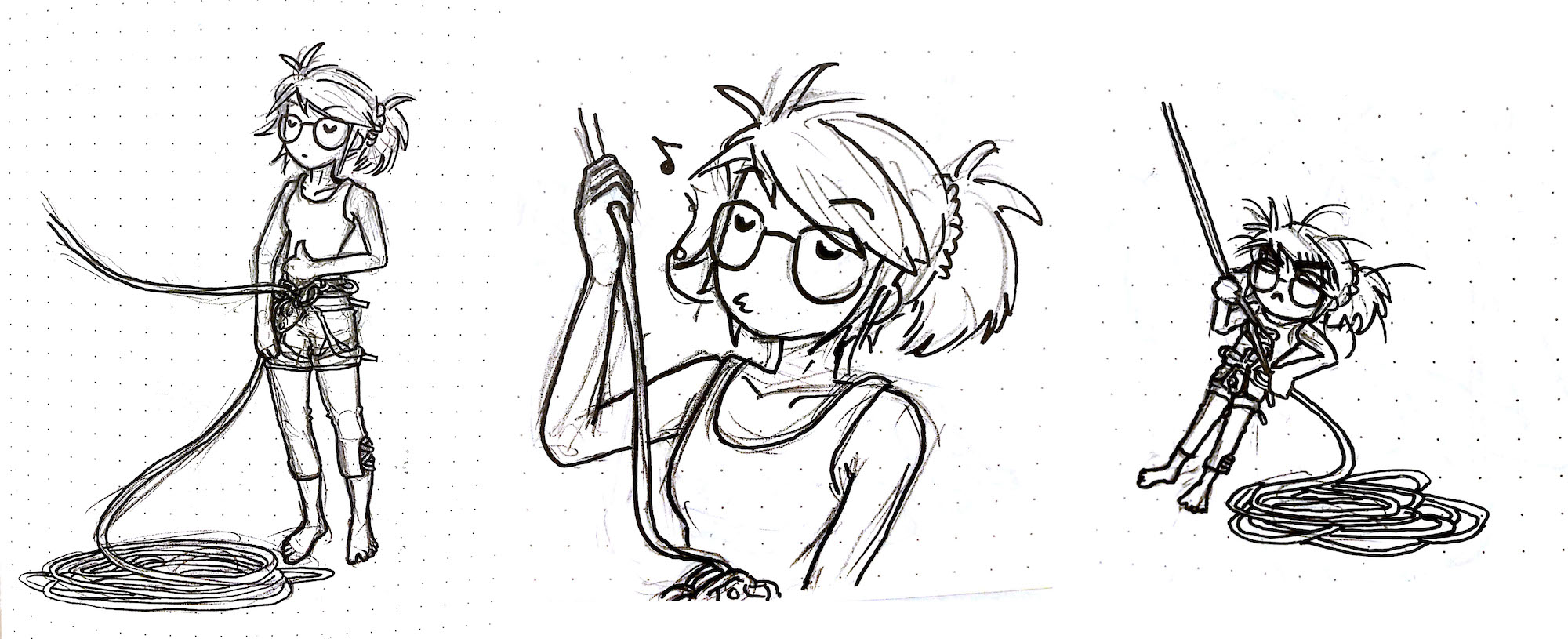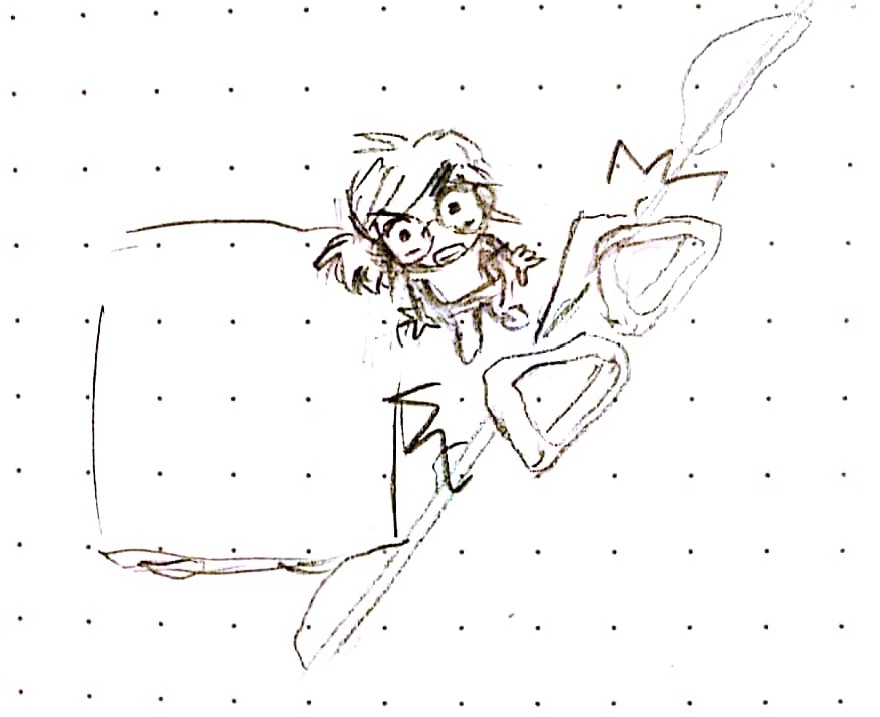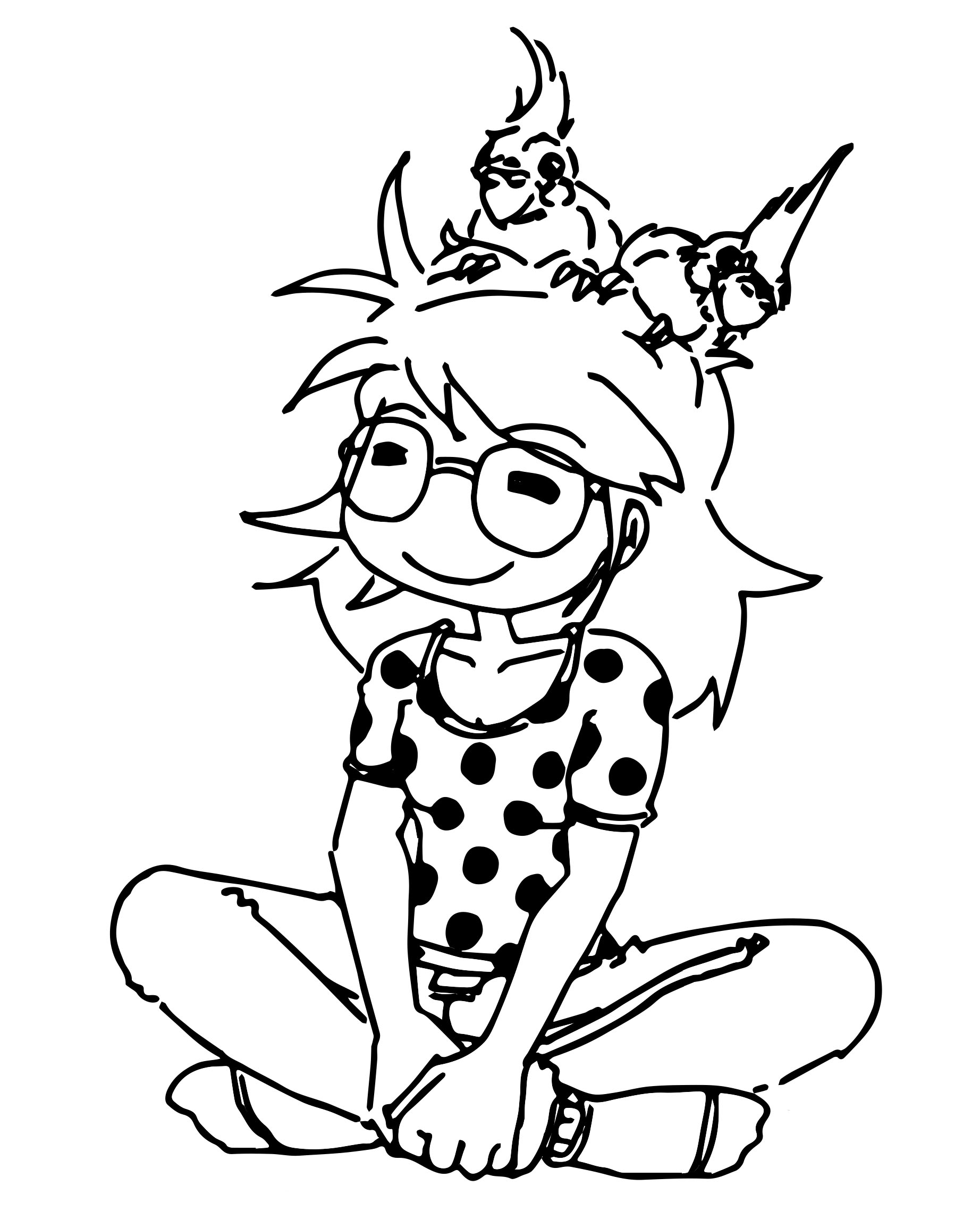 © 2017-2024 Virginie Uhlmann (website design and its content)
© 2017-2024 Virginie Uhlmann (website design and its content)
Virginie Uhlmann, PhD
Director of the BioVisionCenter, Zurich, Switzerland, and Visiting Group Leader at EMBL-EBI, Cambridge, UK
I am an engineer fond of microscopy images who fell in love with computer vision. I hold a MSc in Bioengineering and a PhD in Electrical Engineering, with a focus on spline and approximation theory for image analysis.
I firmly believe that the best kind of science stems from open and collaborative interdisciplinary communities. As such, one of the things I like the most is to nurture community initiatives. This involves advocating for the community's collective interests and contributing to the acquisition and developments of resources that empower every member involved. In February 2024, I took on the leadership of the BioVisionCenter, a newly-created structure co-founded by the Friedrich Miescher Institute and the University of Zurich, which primary objective is to facilitate the analysis of large-scale bioimage datasets. The first initiative of the BioVisionCenter is the expansion of the fully open-source Fractal project into a multi-purpose computational infrastructure for the user-friendly design and management of bioimage analysis workflows. One of my ambitions is to develop the BioVisionCenter into a catalytic facilitator that nurtures collaborations and empowers the many groups developing bioimage analysis methods and tools across the world, while consciously avoiding to impose leadership or overshadow individual efforts in the international landscape.
I am also leading a bioimage quantification research group at EMBL-EBI in Cambridge, UK. There, my research work focuses on the development of aproaches to quantify, describe, and model biological objects observed in microscopy bioimages. My research interests are a mix of computational geometry, statistical shape analysis, machine learning, and biology. We are interdisciplinary: we do theoretical research on geometrical modelling, we implement algorithms to extract morphology-related information from images, and we use all of this to understand living systems in the context of collaborative projects with experimentalists.
In the past, I contributed to the creation and development of the Theory Transversal Theme at EMBL, an organization-wide effort to establish a new research programme promoting theory-guided paths to biological discovery that I was co-chairing until January 2024 and that is still very dear to my heart.
Being a first-generation and female scientist, I deeply care about doing my part in turning academia tino a more welcoming and inclusive environment. Towards this goal, I engage in public events in which I tell about some science that I find exciting or being a human in the scientific world. I am also a mathematics and science ambassador in elementary schools in Switzerland.
As much as I enjoy science, I need a good chunk of climbing and birds in my life to be my best self.
Please note that this is my personal website and is not related to the institution I currently work in. As I enjoy the analog life more than the digital one, the content of this website is likely not entirely up to date.
I am grateful to the Stack Overflow user community for their precious advice and help in designing this webpage.Publications
As of 2020, I am not maintaining the list on this page up to date.
Fortunately, Google Scholar does a decent job at keeping track of my publications. You can also find my papers with my ORCID ID (0000-0002-2859-9241).
Journals (up to 2020)
- A. Song, V. Uhlmann, J. Fageot, M. Unser, "Sparse dictionary learning for 2D Kendall shapes," SIAM Journal on Imaging Science, in press. [pdf]
- J. Fageot, S. Aziznejad, M. Unser, V. Uhlmann, "Support and Approximation Properties of Hermite Splines," Journal of Computational and Applied Mathematics, vol. 268, pp. 112503, April 2020. [pdf]
- D. Nguyen, V. Uhlmann, A.L. Planchette, P.J. Marchand, D. Van De Ville, T. Lasser, A. Radenovic, "Supervised learning to quantify amyloidosis in whole brains of an Alzheimer’s disease mouse model acquired with optical projection tomography," Biomedical Optics Express, vol. 10, no. 6, pp. 3041-3060, June 2019. [pdf]
- J. Fageot, V. Uhlmann, M. Unser, "Gaussian and Sparse Processes Are Limits of Generalized Poisson Processes," Applied and Computational Harmonic Analysis, in press. [pdf]
- V. Uhlmann, C. Haubold, F.A. Hamprecht, M. Unser, "DiversePathsJ: Diverse Shortest Paths for Bioimage Analysis," Bioinformatics, vol. 34, no. 3, pp. 538-540, February 2018. [pdf]
- V. Uhlmann, P. Ramdya, R. Delgado-Gonzalo, R. Benton, M. Unser, "FlyLimbTracker: An Active Contour Based Approach for Leg Segment Tracking in Unmarked, Freely Behaving Drosophila," PLoS ONE, vol. 12, no. 4, pp. 1-21, April 28, 2017. [pdf]
- A. Badoual, D. Schmitter, V. Uhlmann, M. Unser, "Multiresolution Subdivision Snakes," IEEE Transactions on Image Processing, vol. 26, no. 3, pp. 1188-1201, March 2017. [pdf]
- V. Uhlmann, S. Singh, A.E. Carpenter, "CP-CHARM: Segmentation-Free Image Classification Made Accessible," BMC Bioinformatics, vol. 17, no. 1, paper no. 51, December 2016. [pdf]
- V. Uhlmann, J. Fageot, M. Unser, "Hermite Snakes with Control of Tangents," IEEE Transactions on Image Processing, vol. 25, no. 6, pp. 2803-2816, June 2016. [pdf]
- P. Pad, V. Uhlmann, M. Unser, "Maximally Localized Radial Profiles for Tight Steerable Wavelet Frames," IEEE Transactions on Image Processing, vol. 25, no. 5, pp 2275-2287, May 2016. [pdf] [co-first-authorship]
- Z. Püspöki, V. Uhlmann, C. Vonesch, M. Unser, "Design of Steerable Wavelets to Detect Multifold Junctions," IEEE Transactions on Image Processing, vol. 25, no. 2, pp. 643-657, February 2016. [pdf]
- R. Delgado-Gonzalo, D. Schmitter, V. Uhlmann, M. Unser, "Efficient Shape Priors for Spline-Based Snakes," IEEE Transactions on Image Processing, vol. 24, no. 11, pp. 3915-3926, November 2015. [pdf]
- R. Delgado-Gonzalo, V. Uhlmann, D. Schmitter, M. Unser, "Snakes on a Plane: A Perfect Snap for Bioimage Analysis," IEEE Signal Processing Magazine, vol. 32, no. 1, pp. 41-48, January 2015. [pdf]
Conference Proceedings (up to 2020)
- C. Haubold, V. Uhlmann, M. Unser, F.A. Hamprecht, "Diverse M-Best Solutions by Dynamic Programming," Proceedings of the 39th German Conference on Pattern Recognition (GCPR'17), Basel, Switzerland, September 13-15, 2017, [Lecture Notes on Image Processing, Computer Vision, Pattern Recognition, and Graphics, vol. 10496, Springer, 2016], pp. 255-267. [pdf] [supplementary][nominated for best paper award]
- V. Uhlmann, R. Delgado-Gonzalo, M. Unser, P.O. Michel, L. Baldi, F.M. Wurm, "User-Friendly Image-Based Segmentation and Analysis of Chromosomes," Proceedings of the 13th IEEE International Symposium on Biomedical Imaging (ISBI'16), Prague, Czech Republic, April 13-16, 2016, pp. 395-398. [pdf]
- V. Uhlmann, J. Fageot, H. Gupta, M. Unser, "Statistical Optimality of Hermite Splines," Proceedings of the 11th International Workshop on Sampling Theory and Applications (SampTA'15), Washington DC, USA, May 25-29, 2015, pp. 226-230. [pdf]
- V. Uhlmann, M. Unser, "Tip-Seeking Active Contours for Bioimage Segmentation," Proceedings of the 12th IEEE International Symposium on Biomedical Imaging (ISBI'15), Brooklyn NY, USA, April 16-19, 2015, pp. 544-547. [pdf] [nominated for best paper award]
- P. Pad, V. Uhlmann, M. Unser, "VOW: Variance-Optimal Wavelets for the Steerable Pyramid," Proceedings of the 2014 IEEE International Conference on Image Processing (ICIP'14), Paris, France, October 27-30, 2014, pp. 2973-2977. [pdf] [best student paper award]
- V. Uhlmann, R. Delgado-Gonzalo, C. Conti, L. Romani, M. Unser, "Exponential Hermite Splines for the Analysis of Biomedical Images," Proceedings of the 39th IEEE International Conference on Acoustics, Speech, and Signal Processing (ICASSP'14), Firenze, Italy, May 4-9, 2014, pp. 1650-1653. [pdf]
- V. Uhlmann, R. Delgado-Gonzalo, M. Unser, "Snakes with Tangent-Based Control and Energies for Bioimage Analysis," Proceedings of the 11th IEEE International Symposium on Biomedical Imaging (ISBI'14), Beijing, China, April 29-May 2, 2014, pp. 806-809. [pdf]
Thesis
- V. Uhlmann, "Landmark Active Contours for Bioimage Analysis: A Tale of Points and Curves," Swiss Federal Institute of Technology Lausanne, EPFL Thesis no. 7951 (2017), 263 p., December 1, 2017. [pdf] [best 2018 doctoral thesis in electrical engineering]
Public Engagement
I believe that science belongs to everyone and that researchers have a duty to communicate their work to the public and engage in discussions with the society they live in. As a consequence, I try to contribute to the democratization of scientific research through science communication and public engagement initiatives, some of which are listed below.
- "Deep learning for bioimage analysis" (science communication), May 2022.
- Science 4 Everyone (classroom resources), May 2021.
- Genome Lates | Genomic Futures (public discussion), September 2020.
- "Choices", StoryCollider UK (storytelling), December 2019.
- "Human VS computer vision in biomedicine", Café Sci Cambridge (public discussion), May 2019.
Scientific Talks
As of 2020, the Great Zoom Era has made me lose track of the talks I am giving and I am not maintaining the below list anymore. I can usually be found hanging around in bioimaging, microscopy, and computer vision conferences.
2019
- Invited Seminar, University of Leeds, Leeds, UK, December 13, 2019.
- "Mathematical Models for Bioimage Analysis," Invited Talk, Women in Computational Biology Workshop, Janelia Research Campus, Ashburn (VA), USA, November 10-13, 2019.
- "Deformable Spline-Based Models for Bioimage Analysis," Invited Talk, European Numerical Mathematics and Advanced Applications Conference (ENUMATH'19), Egmond aan Zee, The Netherlands, September 30-October 4, 2019.
- "Continuous Models in Bioimage Analysis," Invited Talk, Microscience Microscopy Congress (MMC'19), Manchester, UK, July 5-8, 2019.
- "A Guided Tour of Spline-Based Deformable Contours," Invited Talk, Crick Advanced Imaging and Analysis Forum, The Francis Crick Institute, London, UK, May 31, 2019.
- Invited Seminar, University of Birmingham, Birmingham, UK, February 25, 2019.
- A. Song, V. Uhlmann, J. Fageot, M. Unser, "Sparse Dictionary Learning for Bioimage Analysis of 2D Shapes," Contributed Talk, 3rd NEUBIAS Conference, Luxembourg, Luxembourg, February 2-8, 2019.
2018
- "Mathematical Models for Bioimage Analysis," Invited Talk, From Images to Knowledge with ImageJ & Friends (I2K'18), Heidelberg, Germany, December 6-8, 2018.
- "A Guided Tour of Spline-based Active Contours," Invited Talk, 3rd NEUBIAS Training School, Edinburgh, UK, October 16-19, 2018.
- "Mathematical Models for Bioimage Analysis," Invited Talk, Bioimage Computing Workshop, 15th European Conference on Computer Vision, Munich, Germany, September 8-14, 2018.
- V. Uhlmann, J. Fageot, H. Gupta, M. Unser, "Statistical Optimality of Hermite Splines for the Reconstruction of Self-Similar Signals," Invited Talk and Mini-Symposium Organizer, SIAM Conference on Imaging Science (IS'18), Bologna, Italy, June 5-8, 2018.
- V. Uhlmann, M. Unser, "Spline-based Models in Bioimage Analysis: Cells beyond Pixels," Invited Talk, Trends in Microscopy: Bridging the Worlds, Düsseldorf, Germany, March 12-14, 2018.
- "Continuous Representations in Bioimage Analysis: a Bridge from Pixels to the Real World," Invited Talk, 2nd NEUBIAS Conference, Szeged, Hungary, January 27-February 2, 2018.
2017
- "A Tale of Points and Curves in Bioimage Analysis," Invited Seminar, European Bioinformatics Institute (EMBL-EBI), Hinxton, UK, September 4, 2017.
2016
- V. Uhlmann, M. Unser, "Bioimage Segmentation with Active Contours," Invited Talk, 4th Swiss Imaging Core Facility Day, Geneva, Switzerland, September 16, 2016.
- V. Uhlmann, M. Unser, "Spline-based Models for Image Segmentation," Plenary Talk, 1st European Machine Vision Forum, Heidelberg, Germany, September 8-9, 2016.
- V. Uhlmann, D. Schmitter, M. Unser, "Shape-constrained Tracking with Active Contours," Invited Talk, SIAM Conference on Imaging Science (IS'16), Albuquerque, NM, USA, May 23-26, 2016.
2015
- V. Uhlmann, D. Sage, M. Unser, "Directional Image Analysis in Icy," Contributed Talk, Second Icy Coding Party Pasteur Institute, Paris, France, May 4-6, 2015.
2014
- V. Uhlmann, M. Unser, "Open Active Contours with Tangent-Based Controls and Energies, " Contributed Talk, 1st International Conference on Subdivision, Geometric and Algebraic Methods, Isogeometric Analysis and Refinability in Tuscany (SMART'14), Pontignano, Italy, September 28-October 1, 2014.
2012
- V. Uhlmann, S. Singh, C. Wählby, J. McKinney, A. Carpenter, "Whole Image-Based Classification Using CellProfiler," Poster, BioImage Informatics 2012 (BI'12), Dresden, Germany, September 16-19, 2012, pp. 59-60.
Softwares
The BioVisionCenter develops Fractal, a framework to create, run and manage analysis pipelines that process bioimage data in a standardized fashion, scale to Terabytes of images, and prepare image data for interactive visualization. Fractal is under active development and is a fully open-source project - meaning that if you want to contribute to it, I would love you to and you should read out to me!
My research group at EMBL-EBI develop mostly Python scripts. In the past, I wrote Java-based plug-ins for the open-source image analysis softwares ImageJ, Fiji and Icy.
I have often been told that I "code like a mathematician", which is not meant as a compliment. I am not a software engineer, so please bear with my code and don't hesitate to get in touch if you are struggling to use something I developed.
- Interactive Spline Models: small ImageJ/Fiji plugins to spawn different kind of spline models in an image and interactively deform them. Can be used to generate continuous annotations of object contours.
- FlyLimbTracker: a fly limb and body tracking plug-in for Icy.
- ChromosomeJ and ChromosomeK: a chromosome segmentation and annotation suite for ImageJ.
- DiversePathsJ: a dynamic programming approach for the general task of finding diverse shortest paths between two end-points, implemented as a plug-in for ImageJ.
- Hermite Active Contours: a generic semi-automated multi-purpose segmentation algorithm for ImageJ. A unified version is currently under development. In the meantime, the more specific Open Hermite Snake and Exponential Hermite Snake plug-ins for ImageJ remain available.
- CP-CHARM: a WND-CHARM-like pipeline for whole-image-based classification in CellProfiler.
Teaching
Training material
- ImageQuantification101: introduction to image quantification in Python.
- ShapeAnalysis101: overview of approaches for image-based shape quantification, including both classical statistical shape analysis and deep learning-based approaches.
Lectures and Courses
- EMBO course on Advanced Methods in Bioimage Analysis, September 2023.
- EMBL Lautenschläger Summer School 2023: Visualising Life - Interdisciplinary Approaches to Biology, July 2023.
- EMBL-EBI course on Microscopy data analysis: Machine learning and the BioImage Archive, May 2023.
- Theory@EMBL Module of the EMBL International PhD Programme Predoc Course, December 2022.
- EMBO course on Computational optical biology, October 2022.
- Human Technopole course on Deep Learning for Microscopy Image Analysis, July 2022.
- EMBL Lautenschläger Summer School 2022: Visualising Life - Interdisciplinary Approaches to Biology, July 2022.
- EMBL-EBI course on Microscopy data analysis: Machine learning and the BioImage Archive, May 2022.
- Theory@EMBL Module of the EMBL International PhD Programme Predoc Course, December 2021.
- MBL course on Deep Learning for Microscopy Image Analysis, November 2021.
- Human Technopole course on Deep Learning for Microscopy Image Analysis, September 2021.
- EMBL-EBI course on Microscopy data analysis: Machine learning and the BioImage Archive, July 2021.
- EMBO course on Advanced Methods in Bioimage Analysis, June-July 2021.
- Quantitative Biology Module of the EMBL International PhD Programme Predoc Course, December 2020.
- Cambridge University course NST Part II BBS Bioinformatics, February 2020.
- Cambridge University course IAFIG-RMS: Bioimage analysis with Python, December 2019.
- Quantitative Biology Module of the EMBL International PhD Programme Predoc Course, October 2019.
- EMBL Lautenschläger Summer School 2019: Visualising Life - Interdisciplinary Approaches to Biology, July 2019.
- EMBL-EBI / Wellcome Trust Bioinformatics Summer School 2019, June 2019.
- EPFL course Continuous Signal Processing for Life Scientists and Microengineers (Prof. Michael Unser), 3rd year Bachelor students, 2009 and 2012-2016.[2013 EPFL School of Life Sciences best teaching team award]
- EPFL course Digital Signal Processing for Life Scientists and Microengineers (Prof. Pierre Vandergheynst), 3rd year Bachelor students, 2012-2016.
Students
- Johannes Hugger, "Contrastive representation learning for bioimage quantification," PhD thesis, 2024.
- Maria Theiss, "Synthetic ground truth of biological shapes — Simulating variable Nuclear Pore Complexes for Microscopy," PhD thesis, 2023.
- Soham Mandal, "Geometrical Models for 2D Morphometry in Bioimages," PhD thesis, 2023.
- Luis Hauptmann, "Shape recognition and statistical analysis for phenotyping of developing mouse embryos," Bachelor's thesis, 2023.
- Pierre-Louis Ruhlmann, "Adaptive dictionary learning on shapes: finding hyperparameters from the data," Master's thesis, 2023.
- Anshuman Sinha, "Object detection & reinforcement learning-based spline fitting," Bachelor's thesis, 2022.
- Gabriel Moryoussef, "Shape Space Representation Learning," Master's thesis, 2022.
- Leonardo Mirandola, "Benchmarking instance segmentation models applied to biological images," Master's thesis, 2022.
- Héloïse Monnet, "Automating the analysis ofplanarian flatworm images," Master's thesis, 2022.
- Simon Biberger, "Integral Invariants for Multiscale Curvature Estimation on Cell Membranes," Master's thesis, 2021.
- Ethan Cohen, "Image-based morphological characterization of early mouse embryos," Master's thesis, 2020.
- Julien Jerphanion, "Extracting high quality surface meshes from Optical Projection Tomography scans," Master's thesis, 2020.
- Paula Balcells, "Quantitative metrics from 2D contours for bioimage analysis," Bachelor's thesis, 2020.
- Jules Mabon, "Deep learning for mycobacteria tracking on time-lapse images," Master's thesis, 2019.
- Yoann Pradat, "A unified view of Hermite splines," Master's thesis, 2019.
- Anna Song (co-advised with Dr. J. Fageot and Prof. M. Unser), "Analysis of planar shapes through shape dictionary learning with an extension to splines," Master's thesis, 2018.
- Julien Rüegg (co-advised with Prof. P. Ramdya and Prof. M. Unser), "Tracking animal behavior in neuroimaging studies," Master's thesis, 2018.
- Alexandre Cherqui (co-advised with Prof. M. Unser), "A study of the tip detection problem," semester project, 2018.
- Julien Rüegg (co-advised with Dr. J. Fageot and Prof. M. Unser), "A study of Hermite spline interpolation," semester project, 2017.
- Gaëlle Thurre (co-advised with Prof. John McKinney), "Modeling single-cell behavior of Mycobacteria," semester project, 2015.
- Bertrand Vermot (co-advised with Dr. J. Fageot and Prof. M. Unser), "Corner detection based on PDE methods," semester project, 2015.
- Miryam Chaabouni (co-advised with Dr. J. Fageot, Dr. D. Schmitter and Prof. M. Unser), "Design of active contour models using NURBS," semester project, 2015.
- Arik Girsault (co-advised with Dr. E. Bostan and Prof. M. Unser), "A nonlinear model of phase contrast microscopy," semester project, 2015.
- Lucas Amoudruz (co-advised with Prof. M. Unser), "Refining leg movement extraction in high-speed videos of insect locomotion," semester project, 2014.
- Amicie de Pierrefeu (co-advised with Dr. D. Sage, and Prof. M. Unser), "Tracking flagella endulations in microscopy images," semester project, 2014.
- Laurène Donati (co-advised with Prof. M. Unser), "Modeling Mycobacteria behavior in time-lapse microscopy images," semester project, 2014.
- Pritish Chakravarty (co-advised with Prof. M. Unser), "Designing tip detectors," semester project, 2014.
- Loïc Perruchoud (co-advised with Dr. C. Vonesch and Prof. M. Unser), "Tracking leg movements in high-speed videos of insect locomotion," semester project, 2013.
- Olivia Mariani (co-advised with Prof. M. Unser), "Segmentation and tracking of growing colonies of Mycobacteria," Master's thesis, 2013.
Impressions
I think and explain better when I doodle. Below are some illustrations of this tendency.
These are personal scribbles. In the unlikely event you would like to reuse some of them, I would appreciate to be asked first.
- Science Raviolis
Illustrations for The night that lasted 10 days: a short history of our calendar and Darwin versus Kelvin blog posts.
- Spline-based deformable models (historically called "snakes")
Illustrations of differences between cubic B-spline and cubic Hermite snakes.
- Spline interpolation
Illustrations of the ability of different spline bases to approximate complex shapes by "linking the dots" and serving as a bridge between the analog and the digital worlds.
- Worlds of knowledge
Illustrations of the real, mathematical and digital worlds.
- Ls=w
Illustrations around Ls=w, the magical formula of my Doktorvater, Michael Unser, concieved together with Julien Fageot for the 20th birthday of the Biomedical Imaging Group at EPFL.
- Weird animals
- Stuart impressions
Illustration of Stuart's moods. Stuart is a cockatiel living in my flat.
- Life impressions
- Russian impressions
Illustrations of a conference trip to Novossibirsk.
- Climbing impressions





